Taming the e-waste beast
ReSource Founder Troy Rowe is working to advance Australia’s e-waste recycling sector with a purpose-built facility in Melbourne’s west.

FEATURES
Unlocking biogas potential
A mark of Aussie
The big boys of compaction
Shared vision for resource recovery

authenticity
PROUDLY SUPPORTED BY: OCTOBER 2022 PMS 380 PMS 376 PMS 355
Responsible recycling with






Scan
me to learn more
In this issue
Features
22 A STEELY GAZE
NWRIC and ASI call for an export ban on unprocessed ferrous scrap metal.
25 PLASTIC PIONEERS
Fieldtech Solutions aims to eliminate this generation’s plastics from the environment.
29 HIDDEN POTENTIAL
LGI helps councils unlock biogas opportunities at regional landfills. 33 LEGACY ISSUES
Enviropacific reduces the hazard of former landfills.
36 BIG BOYS OF COMPACTION
Tutt Bryant Equipment introduces the new 57 tonne BOMAG landfill compactor.
38 A SENSE OF CONTROL
VEGA’s sensor technology is providing improved safety and efficiency.
COVER STORY
GUIDING LIGHT
ReSource Founder Troy Rowe is constructing a purpose-built recycling facility to tame the e-waste beast.
AUSTRALIA CONTINUOUSLY
OF THE TOP FIVE
TWO OF A KIND
shared
ecycal Group makes an impact on protecting the environment and contributing to a circular economy.
Troy Rowe, Founder, ReSource
ide Bay spreads the word of quality compost.
47 RESPONSIBLE RECYCLING
Collaboration is key for Black-Ram Recycling and Eldan Equipment.
50 SEAL OF APPROVAL
Lincom Group gains a true mark of Aussie authenticity.
52 SMOOTH OPERATORS
Communication and trust helped Hastings Deering deliver a complex and time-sensitive operation.
54 SMART MOVES
The Volvo EC220D excavator delivers new levels of fuel efficiency.
56 TWO OF A KIND
Repurpose It’s landscape products close the loop on waste.

58 DISMANTLING THE E-WASTE PUZZLE
Green Technology Recycling is focused on tackling Australia’s ever-growing e-waste challenges.
60 MODERN SCIENCE
Three scientists are in their element at Global Resource Recovery.
62 PACKING A PUNCH
STG Global introduces the Pendulum Packer 2.0.
64 MEYER JOINS GENOX
Applied Machinery boosts its recycling range.
Events
IN GOOD HANDS
Celebrating the industry ’s young achievers.
70 WASTE EXPO 2022
Sustainability Victoria shares the state’s success in driving change.
RENEWED AND IMPROVED
Australian Waste and Recycling Expo returned with a new sense of optimism.
Regulars
COUNCIL IN FOCUS
SHOWCASE
WORD
www.wastemanagementreview.com.au / WMR / 3
68
72
66
75 PRODUCT
77 LAST
18
“WITH
REPORTED AS ONE
E-WASTE PRODUCERS PER CAPITA, WE MUST TAKE RESPONSIBILITY FOR RECYCLING IT PROPERLY,” -
A
vision for resource recovery has evolved into a range of landscape products that close the loop on waste. 56


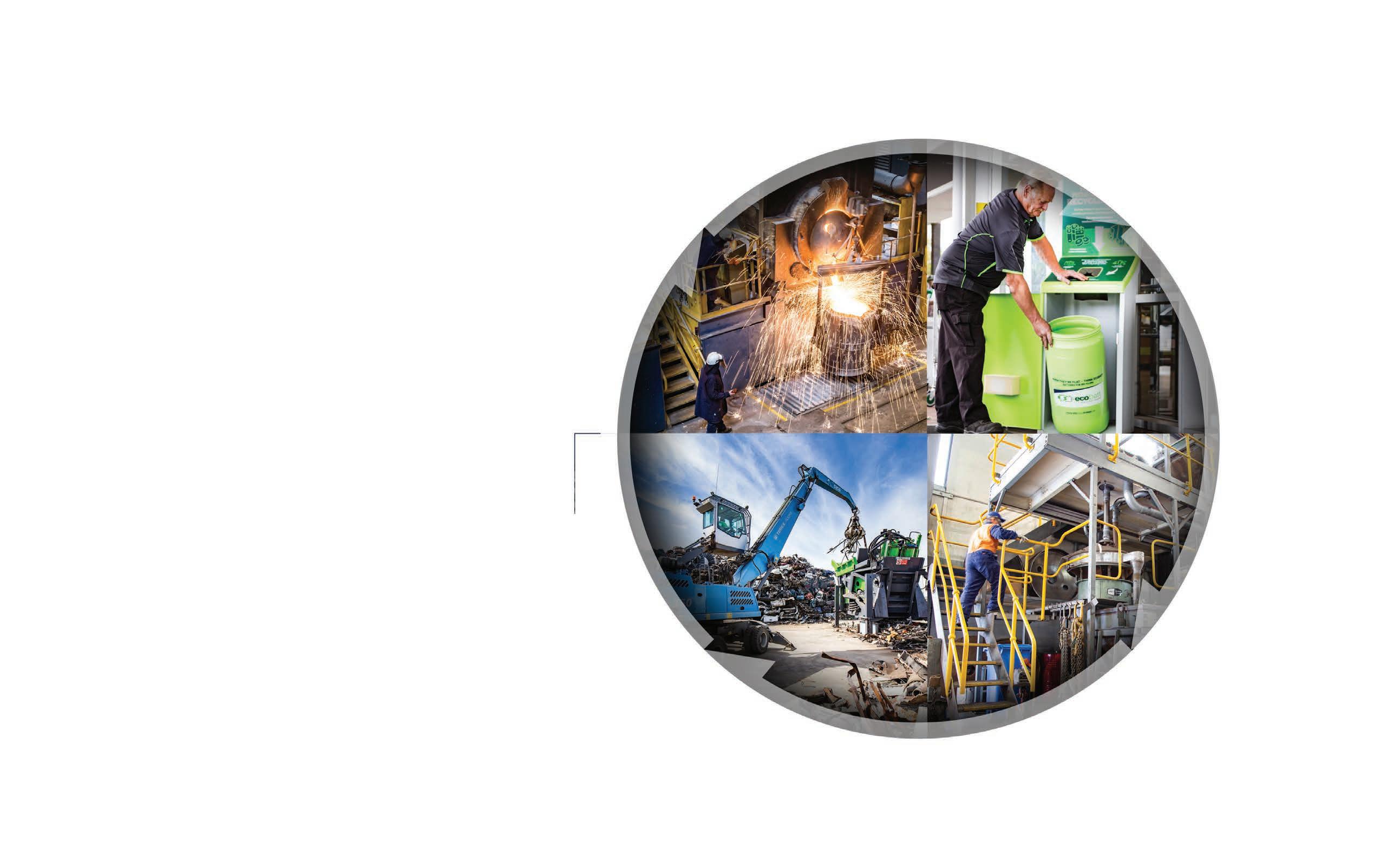



From the Editor
Tipping the scales
Digging a hole in the ground and throwing rubbish into it was considered acceptable waste management in Australia for decades.
Land was plentiful, it was an easy option, and it was cheap.
It was perhaps because of these factors that it took the nation a while to catch up with the rest of the world and search for better options. Now, as the National Waste Policy Action Plan aims for 80 per cent average recovery rate from all waste streams by 2030, the entire waste sector is evolving, including the humble tip.
As this edition of Waste Management Review highlights, new technology, an increasing awareness of health hazards, and advanced equipment are ensuring there’s no longer a set and forget attitude.
LGI Co-Chief Executive Officer Jessica North realised long ago that change is not something brought about by technology alone, but requires a behavioural shift. She’s long had a desire to save the world one landfill at a time and, as community pressure to do the right thing from a climate perspective is increasing, she’s encouraging local governments not to underestimate the capacity landfills can play in reducing greenhouse gas emissions and expediting a zero-carbon future.
Fieldtech Solutions also believes there’s potential to make a big impact on future generations by changing what ends up in landfill. It has developed everyday plastic items that will biodegrade in landfills 10 times quicker than regular plastics. And while landfill diversion is the end goal, the new technology is considered a “backstop” to help the nation along the path.
There’s also advances on the tip face. Compaction is a significant contributor to the lifetime of any landfill and BOMAG’s waste management range is specifically designed by people who understand the extreme conditions. The newest addition, the BC 1173 RB-5, a 57-tonne landfill compactor, takes things up a notch.
But what’s buried doesn’t always stay buried. Landfills can still cause environmental and health hazards decades after they’re no longer in use. Environmental services specialist Enviropacific has made safe, numerous landfills across Australia that have been repurposed into sports fields and public areas or been capped and left idle once they’ve reached capacity.
While many of the projects are to remove waste; recovery and reuse of recyclable material is an increasing outcome.
CHIEF OPERATING OFFICER
Christine Clancy
christine.clancy@primecreative.com.au
GROUP MANAGING EDITOR
Sarah Baker sarah.baker@primecreative.com.au
MANAGING EDITOR
Mike Wheeler mike.wheeler@primecreative.com.au
EDITOR
Lisa Korycki lisa.korycki@primecreative.com.au
JOURNALIST
Leon Cranswick leon.cranswick@primecreative.com.au
DESIGN PRODUCTION MANAGER
Michelle Weston michelle.weston@primecreative.com.au
ART DIRECTOR
Blake Storey blake.storey@primecreative.com.au
DESIGN
Louis Romero, Kerry Pert
BRAND MANAGER
Chelsea Daniel-Young chelsea.daniel@primecreative.com.au
p: +61 425 699 878
CLIENT SUCCESS MANAGER

Justine Nardone justine.nardone@primecreative.com.au

HEAD OFFICE
Prime Creative Pty Ltd 11-15 Buckhurst Street South Melbourne VIC 3205 Australia
p: +61 3 9690 8766 f: +61 3 9682 0044 enquiries@primecreative.com.au www.wastemanagementreview.com.au
SUBSCRIPTIONS
+61 3 9690 8766 subscriptions@primecreative.com.au
Waste Management Review is available by subscription from the publisher. The rights of refusal are reserved by the publisher
ARTICLES
All articles submitted for publication become the property of the publisher. The Editor reserves the right to adjust any article to conform with the magazine format.
COPYRIGHT
Waste Management Review is owned by Prime Creative Media and published by John Murphy.
All material in Waste Management Review is copyright and no part may be reproduced or copied in any form or by any means (graphic, electronic or mechanical including information and retrieval systems) without written permission of the publisher.
The Editor welcomes contributions but reserves the right to accept or reject any material. While every effort has been made to ensure the accuracy of information, Prime Creative Media will not accept responsibility for errors or omissions or for any consequences arising from reliance on information published. The opinions expressed in Waste Management Review are not necessarily the opinions of, or endorsed by the publisher unless otherwise stated.
Korycki
Lisa
6 / WMR / October 2022




To find out more, call: 03 9706 8066, Email: sales@appliedmachinery.com.au, or visit: www.appliedmachinery.com.au Recycling Technology. Shredders, Raspers, Granulators, Wash Plants, C&D, eWaste Lines, Tyre Plants, Repelletising and more. That’s Applied Thinking.
$13m funding for compost facility
The Federal Government will provide funding to build a new large-scale composting facility in the ACT, as well as supporting the construction of another new recycling facility – delivered in partnership with the ACT Government.
Tanya Plibersek, Minister for the Environment and Water, announced a $13 million contribution from the Food Waste for Healthy Soils Fund, for the construction of a large-scale Food Organics and Garden Organics (FOGO) .
The facility will process up to 50,000 tonnes — equivalent to the weight of 30,000 cars — of organic waste per annum.
“Large-scale composting infrastructure is essential to enable FOGO collections to be expanded to every household in the ACT,” said Chris Steele, Minister for Transport and City Services in the ACT. “Once built, Canberran’s food and garden waste will be collected in their green bin and recycled into nutrient-rich compost, cutting waste emissions by up to 30 per cent.”
The ACT Government also announced that a new Materials Recovery Facility (MRF) will be built at Hume, funded in partnership with the Australian Government, rather than upgrading the existing facility.
“Building a brand new modern MRF facility, adjacent to the old facility, will ensure the ACT has entirely new stateof-the-art recycling infrastructure as our region grows. It will improve safety and avoid the need to close the existing MRF during construction,” Steel said.
The ACT Government will seek industry partners to design, construct, maintain and operate the new FOGO and MRF facilities with the first approach to market later this year.
The Australian Government’s $67 million Food Waste for Healthy Soils Fund will leverage more than $171 million in total government and industry investment.
ACOR’s Recycle Mate app is learning and improving
The Recycle Mate app continues to improve as it helps Australians wade through the confusion of kerbside recycling.
An initiative of the Australian Council of Recycling (ACOR), the free Recycle Mate app combines a recycling database with Artificial Intelligence (AI) to take the guesswork out of what goes in which bin.
The app enables users to photograph an item to find out where it can be recycled or disposed of, whether in local council bins or elsewhere. The AI model is continually learning through user feedback every time an item is checked.
Recycle Mate is aimed at providing a national platform for residents and recyclers to share information as well as answer recycling questions.
Every council kerbside recycling system across Australia is now supported by the app. For items that can’t be recycled at home, it also lists more than 20,000 alternative reuse and recycling options, a number that continues to grow as more organisations get on board.
One common question relates to the recyclability of takeaway coffee cups. According to ACOR, about 56 per cent of Australians believe these cups can be recycled in kerbside bins, a common mistake that contributes to contamination of recycling streams around the country.
Recycle Mate has recently partnered with Simply Cups, an initiative of Closed Loop, to geolocate more than 700 public locations where coffee cups can be properly recycled.
Brendan Lee, Circular Economy Manager for Closed Loop, says the liquid-proof lining of the paperboard cups prevents the recovery of recyclable fibres.
“Simply Cups has partnered with Recycle Mate, 7-eleven and dozens of shopping centres to help deliver an alternative recycling pathway,” he said.
“The AI recognition software in Recycle Mate is excellent, and the geolocation makes it easy for users to identify their closest coffee cup recycling location.”
Another regular contaminant in kerbside recycling is soft plastics such as bread bags and chocolate wrappers. To help the community find alternative recycling options, Recycle Mate lists the more than 2200 REDCycle locations now available to receive soft plastics for recycling.
8 / WMR / October 2022
News
TELFORD SMITH supply a complete range of Washing & Recycling Plants for Rigid, Flexible & Flaked Plastics including bottles, drums, irrigation tubes & pipes, agricultural film & more.
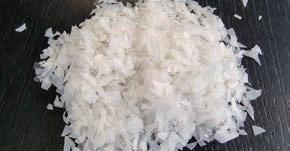

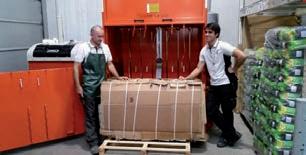
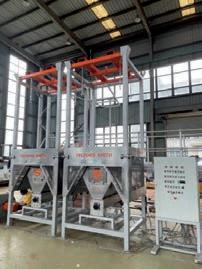
TELFORD SMITH are able to offer turnkey solutions incorporating electronic materials sorting & separating, metal detection, dewatering & compacting, extrusion & pelletising lines.



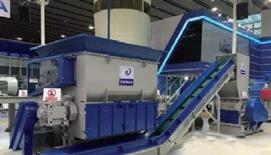
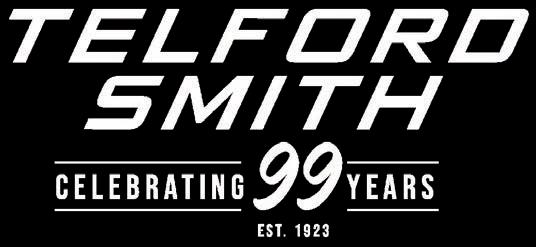
www.TelfordSmith.com.au Shredders & Granulators for Size Reduction Handling Systems Balers for Solid Waste Electronic Sorting & Separating Product Destruction & Separation
Recycling coffee grounds for a more sustainable road
Used coffee grounds are being repurposed to conserve and improve topsoil quality as part of the Childs Road Upgrade in Melbourne’s north.
In a first for a major infrastructure project in Victoria, the equivalent of 250,000 lattes’ worth of coffee grounds will be incorporated into the project.

Social enterprise Reground has sourced grounds for the project from cafes in the area, including Tyler’s Milk Bar and Café Colores in Reservoir; Drip Drop, Bagels Baby and Poppy Café in Pascoe Vale; and Genovese in Coburg.
The 60 cubic metres of coffee grounds will be mixed with topsoil during landscaping – boosting the nutrient levels within the soil to help freshly planted seeds and seedlings thrive.
Coffee grounds on their own are too acidic, but mixed with other organic matter such as topsoil, they can help feed the soil with high levels of carbon, potassium, and nitrogen. It is expected this will nurture the soil and create greener landscaping around upgraded sections of road and shared user paths.
More than 160 trees and 27,500 shrubs will be planted as the Childs Road Upgrade project nears completion.
In keeping with Victoria’s Recycled First policy, the project has also used more than six tonnes of 100 per cent recycled plastic eMesh which replaces traditional steel mesh and non-recycled plastic fibres for reinforcement.
Workers have also installed 470 metres of recycled pipes, made from the

equivalent of about 150,000 two-litre plastic milk bottles.
The Childs Road Upgrade is being delivered by Major Road Projects Victoria and ACE Contractors, and is due for completion by the end of 2022.
The coffee grounds have been sourced by Reground. (Victoria’s Big Build)
‘Smart Bin’ prototype sorts out waste stream contamination
Researchers from CSIRO and University of Technology Sydney (UTS) have teamed up for the development of a new ‘Smart Bin’ to help sort waste streams at the source.
Smart Bin Technology uses Internet of Things (IoT), sensing, robotics, Artificial Intelligence (AI), and infrared spectroscopy technologies to automatically sort metal, glass, as well as specific types of plastic.
According to UTS, New South Wales generates 800,000 tonnes of plastic every year, but only 10 per cent of that is recycled. This is in part due to the difficulty of
sorting the wide range of plastic waste material.
The proof-of-concept Smart Bin device is designed to improve recycling rates and reduce contamination in waste streams.
Wei Ni, CSIRO Principal Research Scientist, said Smart Bin Technology could be used at venues such as shopping centres, schools, cinemas, coffee shops, and airports.
“It will improve recycling rates because it is so easy to use and could ensure that materials can be recovered for reuse,” he said.
Professor Ren Ping Liu, UTS researcher, said the device would help promote the circular economy and contribute to a carbon neutral future.
“Working with CSIRO, we have developed the latest IoT and AI technologies to build this Smart Bin,” he said. “It can simplify the recycling process and improve efficiency for waste classification and sorting.”
Dr Larry Marshall, CSIRO Chief Executive, said innovation and collaboration were essential to developing Australia’s circular economy.
10 / WMR / October 2022 News











www.enviropacific.com.au 1300 510 407 ENVIROPACIFIC is Australia’s leading remediation expert providing innovative and sustainable solutions for PFAS, asbestos, contaminated soil and more. On top of our broader remediation capabilities, we have a focus and experience on landfills, including: Environmental engineering and technical solutions Remediation design, feasibility and treatment trials Landfill leachate treatment Containment cell construction, lining, drainage and capping Groundwater cut-off and retaining walls Landfill gas drainage and vapour extraction Leachate drains Hazardous waste handling, removal, treatment and disposal Landfill mining and resource recovery STOPPING PREVENTING REVERSING ENVIRONMENTAL DAMAGE
Recycled tyre rubber makes for greener, lighter concrete
Engineers in Melbourne have discovered a way to replace 100 per cent of conventional aggregates in concrete – such as gravel and crushed rock – with rubber from discarded tyres that meets building codes, promising a boost for the circular economy.
The team from RMIT University says the new greener and lighter concrete also promises to reduce manufacturing and transportation costs.
Small amounts of rubber particles from tyres are already used to replace these concrete aggregates, but efforts to replace all of the aggregates with rubber have produced weak concretes that failed to meet the required standards – until now. A study published in the Resources,

Conservation & Recycling journal reveals a manufacturing process for structural lightweight concrete where the traditional coarse aggregates in the mix were completely replaced by rubber from used car tyres.
Lead author and PhD researcher from RMIT University’s School of Engineering, Mohammad Momeen Ul Islam, said the findings debunked a popular theory on what could be achieved with recycled rubber particles in concrete.
“We have demonstrated with our precise casting method that this decades-old perceived limitation on using large amounts of coarse rubber particles in concrete can now be overcome,” Islam said. “The technique involves using newly


designed casting moulds to compress the coarse rubber aggregate in fresh concrete that enhances the building material’s performance.”
Study co-author and team leader, Professor Jie Li, said this manufacturing process will unlock environmental and economic benefits.
“As a major portion of typical concrete is coarse aggregate, replacing all of this with used tyre rubber can significantly reduce the consumption of natural resources and also address the major environmental challenge of what to do with used tyres,” he said.
Used tyres in Australia cannot be exported, making new methods for recycling and reprocessing them locally increasingly important. About 1.2 billion waste tyres will be disposed of annually worldwide by 2030.
The greener and lighter concrete could also greatly reduce manufacturing and transportation costs, Li said.
“This would benefit a range of developments including low-cost housing projects in rural and remote parts of Australia and other countries around the world.”
The team’s manufacturing process could be scaled up cost effectively within a precast concrete industrial setting in Australia and overseas, Islam said.
Following successful testing in the workshop, the team is now looking into reinforcing the concrete to see how it can work in structural elements.
The RMIT research team also includes Professor Yu-Fei Wu, Dr Rajeev Roychand and Dr Mohammad Saberian.
12 / WMR / October 2022
News
The RMIT team’s new casting technique generates structural lightweight concrete from used tyre rubber. (Mohammad Islam, RMIT)


















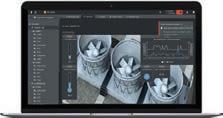


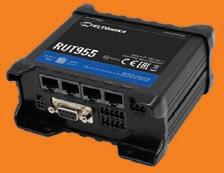

Sense and Process Send data to Moneo Download to Smart Device Submersible pumps do the essential – but dirty work – of transporting sewage to treatment plants. Prone to blockages, ragging, and general wear and tear, pumps need to be monitored to avoid events such as overflow and environmental contamination of public and residential areas. With this solution the following issues can be detected: ■ Ragging ■ Blockage by foreign objects ■ Faulty or damaged bearings ■ Faulty or damaged seals ■ Wear issues and rub issues ■ Imbalance ■ Cavitation ■ Looseness ■ Unusually high signatures in grinders and macerators Optionally, the system can also monitor: ■ Excess Current ■ Sewage Level and Control ■ Flow and Temperature Direct Comms to PLC via front end dedicated ports is also available for: ■ Ethernet Ip ■ Modbus TCP/IP ■ Ethercat ■ Profinet Detect problems in submersible pumps using ifm’s moneo solution 1300 365 088 sales.au@ifm.com | www.ifm.com/au
No soft option
PRODUCERS,
WHEN IT COMES TO
AND SUPPLIERS ARE MOVING IN THE SAME
PACKAGING, BUT SOFT
The 2025 National Packaging
Targets provide a framework for national action on waste management, recycling and resource recovery for product packaging.
One of the four targets, ‘50 per cent average recycled content in all packaging’ is critical to creating demand for recycled content in packaging, according to the Australian Packaging Covenant Organisation (APCO).

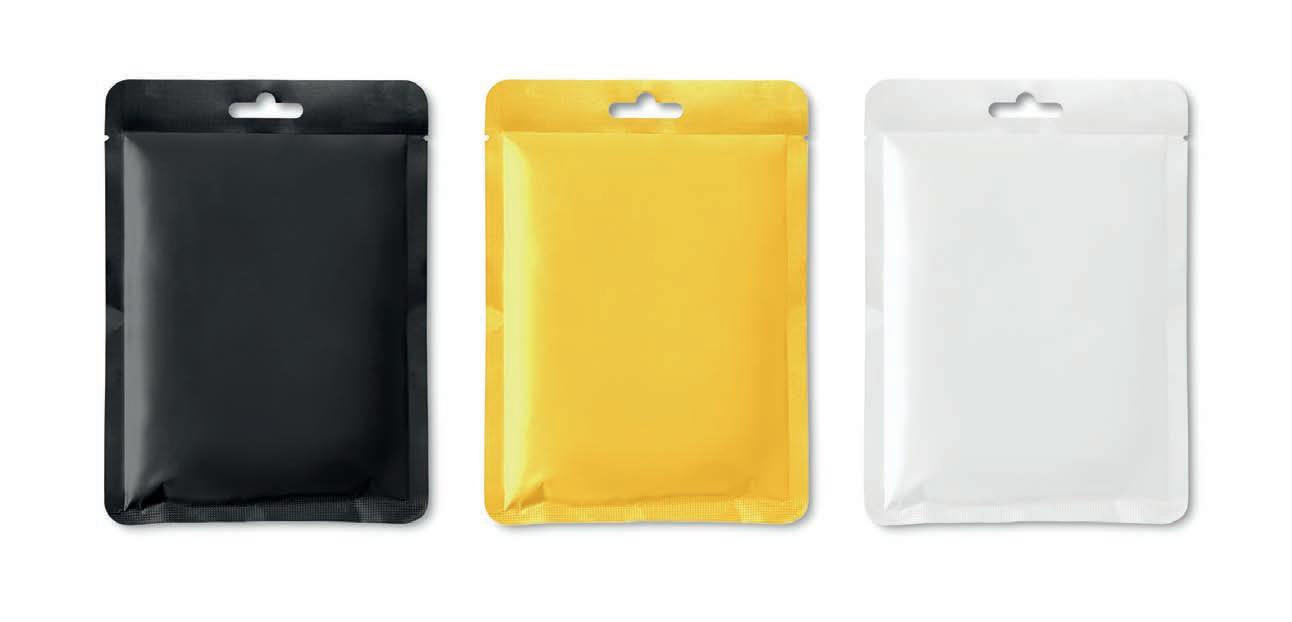
APCO is working to develop resources and generate confidence in investors to back technologies and facilities to help reach the targets.
At the Australasian Waste and Recycling Expo in Sydney recently, it looked at the key strategies and activities that are needed – and how every player in the packaging supply chain, from producers and manufacturers to councils and consumers, has a role to play.
While all players are at different stages of the journey to secure recycled content and use it in their packaging, one common denominator is the difficulty in how to deal with soft plastics.
iQ Renew announced a plan to work with Nestlé to develop the first
food grade wrapper from recycled content in Australia during a National Plastics Summit in Canberra in 2020.
General Manager Graham Knowles told the expo that six months later, and after a lot of lobbying, then Prime Minister Scott Morrison was presented with a KitKat in a wrapper made from recycled content.
Iq Renew is working with biotech company Licella to go back to the foundations of plastic – recycling soft plastics to oil that can then be reused in manufacturing. Ultimately, Graham would like to see all soft plastics used in advanced recycling but there are
MANUFACTURERS
DIRECTION
PRODUCT
PLASTICS
14 / WMR / October 2022 FEATURE NEWS
Australian Packaging Covenant Organisation is developing resources to help reach national packaging targets.
challenges, including collection of the plastics.
“Soft plastics inherently end up going to landfill,” Graham said. “We had to look for a paradigm shift and ask, ‘what if we could sort soft plastic and put it in the yellow recycling bin?’
“From an industry perspective, when we first talked about it, it horrified peers. They’ve been fighting for years to get soft plastics out of the yellow bin. But we all have a yellow bin outside our home, and we want to encourage people to recycle. The more they put in the bin the better.”
iQ Renew called for volunteers to opt-in to a trial to put soft plastics into a separate bag and then place that bag in their yellow bin for collection.

Graham said the trial proved successful in providing a clean feedstock that is easy to sort at
material recovery facilities, the hurdle now is encouraging investment to develop it further.
He says while there is progress being made to recycle rigid plastic within Australia, there is a gap in the development of infrastructure. iQ Renew has a full-scale demonstration plant on the Central Coast that shows how soft plastics recycling can work. It also has plans to establish a plant in east Queensland and Victoria.
“We’re trying to work toward 150,000 tonnes of soft plastics recycling capability by the end of 2024 but there’s 600,000 tonnes of soft plastic going to landfill right now in this country,” Graham said.
“For all brands and manufacturers to buy domestically sourced recycled content is going to require effort from all parties.
“There’s plastic everywhere, we just can’t build the capacity fast enough.”
Jake Hatton, Mondelez International, Sustainability Lead for Australia and New Zealand, said Licella and APR in Melbourne are setting a new standard and forging the path ahead for advanced recycling in Australia.
He’s hopeful their progress will make it easier for other companies, such as Mondelez, to source material domestically. Mondelez, whose brands include Cadbury and Cadbury Dairy Milk, has committed to making all packaging recyclable and providing recycling information by 2025.
“Soft plastic is our greatest challenge,” Jake said at the expo. “Our products lend themselves well to soft plastic packaging and presently there is no domestic solution for reaching our targets.
“We’re very focused on what we can do to accelerate a domestic
www.wastemanagementreview.com.au / WMR / 15
National Packaging Targets require 50 per cent average recycled content in all packaging by 2025.
solution when it comes to advanced recycling. We want to see that domestic solution well and truly on track.”
From September 2022 the wrapping of Cadbury chocolate blocks in Australia and New Zealand will incorporate 30 per recycled content. The packaging will be imported from Europe.
Jake said it took about 12 months to scour the globe to find a company capable of producing the packaging at the scale required.
He said the process highlighted the importance of collaboration both within the company and industry partners.
“What’s integral is we can’t get things done in our business unless everyone is on board, from finance, to procurement and marketing.
“If they don’t know where we’re heading, it’s difficult to get things done.
“We were committed to our Cadbury chocolate packaging goal and demonstrated there was a market for this in Australia, but without collaboration it wouldn’t have happened.
“It took a lot of people’s determination. I would love to see that capability locally.”
Kate Mossop, Sustainable Packaging Manager for Coles Supermarkets, said industry collaboration is driving good results as the company aims for its own target of all Own Brand product packaging being 100 per cent recyclable, reusable or compostable by 2025.

Coles brand water bottles have been 100 per cent recycled since
2014 and its meat trays contain 70 per cent recycled plastic.
But while Coles is making good progress with some of the more commonly available materials, such as PPE, Kate agreed there were challenges not only with soft plastics but other packaging.
“Our key responsibility is ensuring we have the right materials so we can go through that recycling process and turn packaging back into packaging,” she said.
“We’re working hard to remove all the nasties we shouldn’t be having in our soft plastic while trying to maintain the food protection properties and all the barriers to maintain shelf life.
“We feel we’ve solved the low hanging fruits, now we’re left with the tricky formats.”
16 / WMR / October 2022
iQ Renew worked with Nestlé and Licella to develop the first food grade wrapper from recycled content in Australia.
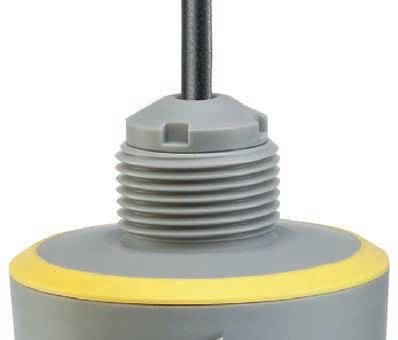
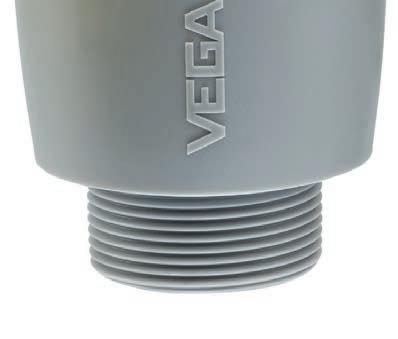

80 GHz level sensor with fixed cable connection (IP68) www.vega.com/vegapuls All advantages of the radar technology: $741 VEGAPULS C 11 RADAR ULTRASONIC IS THE BETTER
Guiding light
FOUNDER TROY ROWE IS CONSTRUCTING A PURPOSE-BUILT RECYCLING FACILITY TO TAME THE E-WASTE BEAST.
Overcoming obstacles is often intertwined with the journey to success and behind many successful businesses is someone who made a courageous decision.
ReSource’s Founder Troy Rowe, a third-generation recycler, has ignored the cynics and is working to advance Australia’s e-waste recycling sector.
Tackling a problem that many others have shunned is nothing new for Troy. Earlier this year, ReSource built a battery recycling facility, home to the Southern Hemisphere’s first installation of an X-ray sorter for
batteries. The company is thought to be Australia’s first and only alkaline and zinc-carbon battery recycler capable of producing a fertiliser-grade black mass output.
The new purpose-built e-waste facility is set across the same 15,000-square metre site in Derrimut, Victoria and is almost twice the size of the next largest facility in Australia.
THE PROBLEM

E-waste is the fastest growing waste stream globally. Troy says some
countries tackle it better than others. He’s taken inspiration from overseas to create ReSource’s dedicated e-waste processing facility, a critical component he says is missing in Australia’s recycling landscape.
“With Australia continuously reported as one of the top five e-waste producers per capita, we must take responsibility for recycling it properly,” Troy says.
“You have to treat e-waste as its own beast. It has to be treated as its own waste stream and not go through the same shredding, separation and
RESOURCE
18 / WMR / October 2022 COVER STORY
An artist’s render of the purpose-built ReSource facility to be constructed in Melbourne’s west.
dust collection systems as all other scrap metal.
“We’ll have multiple stages with various technologies to liberate and then separate different materials, including those with low recovery rates, and all specifically designed for e-waste processing.”
But it’s not just the methods of processing that differentiate a bespoke e-waste recycling facility.
“With the hazardous material potentially contained in e-waste, traditional dust extraction systems are insufficient,” Troy says.
“Specifying dual stage activated carbon filters was always a critical element of the plant design to ensure volatile organic compounds and airborne heavy metals are captured. It’s not good enough to simply use a standard air filtration system when processing these materials.”
FIRE PREVENTION
With more e-waste comes increasing environmental and occupational health and safety risks for those working in the industry. ReSource is implementing ground-breaking environmental, safety and fire controls to combat this.

These controls include investing in some of the most advanced fire protection systems available, including multiple thermalactivated fire cannons covering the entire factory.
The cannons use artificial intelligence (AI) to detect a thermal risk, as opposed to other heat-generating sources such as truck or excavator exhausts, and act immediately, without human intervention, to spray 20 litres of water per minute up to a range of 50 metres.
More than a dozen static thermal cameras have also been installed across the site, using AI to detect thermal risks and raise alerts to staff via mobile phone and on-site alarms and to a third-party offsite monitoring company 24/7. The fire alarm system is directly connected to Fire Rescue Victoria, which has access to the site.
A 4K pan-tilt-zoom (PTZ) camera and a further 32 static cameras ensure that in the event of an incident, authorities can monitor active risks as well as determine the location and cause of incidents after the fact.
Rounding out the proactive approach to mitigating risk; the building is fully sprinklered, including the canopy; a spark detection and extinguishing system will be installed within the dust collection, and multiple fire protection bunkers
www.wastemanagementreview.com.au / WMR / 19
Troy Rowe, ReSource Founder.
Troy Rowe, ReSource Founder
will be located within the factory for tipping off and segregating bulk e-waste.
“We are seeing so many fires in the recycling industry that domestic insurance companies have left the market,” Troy says. “It is no longer just about fire protection; it is about prevention and attacking thermal risks before they become a fire.
“E-waste is hazardous material; unfortunately, with the introduction of lithium-ion batteries, now it’s also very flammable. If we don’t do something about it as an industry and
put in protection measures, we will have more and more issues.
“We’ve invested significant time and money to ensure we are best in class and it’s something I’m very proud of. People may not consider it a big deal, but that’s the sort of detail and level we’ve gone to that does not exist at any other facility in Australia.”
While ReSource has taken its responsibility to prevent fires seriously, the investment in processing equipment is equally impressive. The site will house advanced processing
and separation equipment, including multiple shredders and hammermills, eddy currents and colour, size, X-ray and density sorters. Troy says it’s designed for maximum recovery of all materials, right down to powder-size particles.

POWER MOVE
Elements outside of Troy’s power have created the most significant hurdles along the way – council permits, licences, and equipment delays – and connecting to the local electricity grid. He can’t flick the switch on the battery recycling plant without a power upgrade, but there’s a nine-to-12-month backlog on transformers manufactured within Australia.
“Getting power is tough,” Troy says. “It’s been a real eye-opener to me in terms of the delays. It’s a hurdle to the industry that shouldn’t be there.
“We’re a First World country that should have a plentiful power supply. We shouldn’t be spending
The e-waste plant will house advanced processing and separation equipment.
20 / WMR / October 2022 COVER STORY
“We need more companies to recycle e-waste appropriately at scale. We need competition and many more dedicated e-waste processing facilities spread across the country”
months justifying why you need the power to build an essential piece of infrastructure for the state. If they released some of these barriers to entry, more people might be willing to take a leap of faith and build the infrastructure that our recycling industry needs.”
Troy had always planned for the site to be as self-sufficient as possible. The installation of an 850kw solar system has now taken on more importance. He engaged a project management company to design and procure a transformer that met Australian power authority requirements. It is currently being built overseas but needs to be shipped and certified before it can be installed.
Eventually, the solar system will produce more power than the facility requires, making ReSource a netnegative user, believed to be another first for the recycling industry within Australia.
“We’re doing everything within our power to ensure we’re operating safely and
500,000 tonnes of e-waste this year alone, but there are no other bulk processing plants in Australia. So, where is this material going?

“It will predominately end up in landfill, exported to Third World countries or at scrap metal sites where they primarily recover steel, but the rest gets lost in the flock.
“We need more companies to recycle e-waste appropriately at scale. We need competition and many more dedicated e-waste processing facilities spread across the country.”
Despite the setbacks, Troy has never lost sight of the end game.
environmentally friendly at all times.” Troy says.
The facility will be certified by the International Organization for Standardisation for management (ISO 9001), environmental footprint (ISO 14001) and occupational health and safety (ISO 45001) standards, as well as Australian Standards for collection, storing, transport and treatment of e-waste (AS5377). A fully digital ISO compliance software platform will be used across the site.
The Environment Protection Authority will license the facility to process up to 20,000 tonnes per annum of e-waste, but it’s a drop in the ocean when dealing with Australia’s e-waste, says Troy. Electronics are embedded into the world’s culture, and the need to dispose of e-waste responsibly will only increase.
CALL TO ACTION
“I’m only one piece of the puzzle,” Troy says. “The Australian Government’s own reports estimate the country will generate more than
Supported by a Sustainability Victoria E-waste Reprocessing grant, the Derrimut facility will set a new benchmark for e-waste recycling and create new jobs when it’s launched at the end of 2022.
“No one has been prepared to do this at the scale needed,” Troy said. “I want to be able to say I went ahead and did it, and it works.
“We’re not dealing with e-waste appropriately in this country, but I know most of what we’re doing is an Australian first, which means a lot to me. It’s taken longer than hoped but this was always a big vision; sometimes, they can take a bit longer to manifest than you wanted them to.”
Troy admits that he might not have kept going if he had known the challenges at the beginning of his journey. Despite the frustration, years of delays, and red tape, Troy remains determined to set Australia’s e-waste recycling on the right path.
He is hopeful the recycling plant will become a template for others, and the work in risk mitigation will set the standard for future recycling facilities.
For more information, visit: www.re-source.net.au
www.wastemanagementreview.com.au / WMR / 21
E-waste is the fastest growing waste stream globally.
A steely gaze
NATIONAL WASTE AND RECYCLING INDUSTRY COUNCIL MEMBERS WILL P LAY A VITAL ROLE IN REACHING 2030 CARBON EMISSIONS TARGETS. CHIEF EXECUTIVE OFFICER RICK RALPH EXPLAINS
As the Federal Government finalises the last of its recyclable material export specifications, our focus turns to understanding how the Albanese government’s election commitments will align with the major reforms our industry has been working towards since the 2019 National Waste Action Plan was published.
It is fortunate in terms of policy reform, that the newly elected government’s policy agenda aligns
well with previous arrangements, and its published election commitments provide confidence that the action plan objectives remain ontrack. (www.alp.org.au/policies/waste-andrecycling-plan).
Cognisant that the overarching waste policy principles are aligned with the government’s legislated emissions reduction target of 43 per cent by 2030, Rick Ralph, Chief Executive Officer of the National
(NWRIC) says his members will play a vital role in realising a circular economy and contribute significantly to achieving and, exceeding carbon emissions reduction targets.
NWRIC and Australian Steel Industry are calling for an export ban on unprocessed ferrous scrap metal.

Following the successful introduction of quality regulations for the export of glass, plastics and tyres, and paper and cardboard (from July 2024), NWRIC, in partnership with the Australian Steel Industry (ASI), commissioned Australian Economic Advocacy Solutions (AEAS) to analyse the environmental and economic benefits of implementing a national ban on the export of unprocessed ferrous scrap metal that fails to meet international quality standards.
NWRIC and ASI have been advocating for a national ban on the export of unprocessed ferrous scrap metal. The call for change is based on the premise that the retention of Australian ferrous scrap metal for processing locally is an important environmental and economic opportunity for Australia – providing enhanced and beneficial environmental (and carbon) outcomes; securing Australia’s longterm recycling infrastructure and sovereign steelmaking capacity; and creating direct and indirect economic and employment opportunities.
Recycled scrap inputs into steel manufacturing are critical in our domestic steel industry’s strategy to reduce emissions intensity and support circularity for a decarbonised
22 / WMR / October 2022 INDUSTRY INSIGHT
steel industry. AEAS found that the use of processed Australian ferrous scrap metal increases the recyclable material, enabling Australian steel producers to reduce their GHG emissions.
Australian steel manufacturing is among the least emissions intensive in the world. Building on this position, the Australian steel industry has well stated goals to further decarbonise the industry through the production of ‘low carbon steel,’ but is reliant on the ongoing supply of high-quality scrap feedstock.
Introducing regulation to ensure ferrous scrap metal meets internationally recognised quality standards prior to export is required to meet the nation’s decarbonisation aspirations. Such an approach will also provide domestic feedstock and Australian steel mills will not be required to import processed scrap metal to replace exported feedstock. In FY21, Australia imported nearly 100,000 tonnes of processed scrap metal.
The estimated 1,070,575 tonnes of unprocessed ferrous scrap metal exported annually contains waste that is predominately made up of glass, plastics, and tyres – all of which attract export bans singularly.
This unprocessed scrap metal emanates from predominantly postconsumer materials, whitegoods, and end-of-life car bodies. These materials may also contain lead acid, NiCad and lithium-ion batteries, as well as residual quantities of oil, fuel and coolants.

Unfortunately, much of the waste materials that are attached are being exported to developing countries, many of which fail to have appropriate environmental compliance standards and oversight to accept and dispose of these waste materials.
Based on AEAS modelling, the transport CO2 emissions saving from a ban of this nature would be 81,110 tonnes. Furthermore, recycling 802,975 tonnes of ferrous scrap metal would save an additional 1.2 million tonnes in emissions as compared to the use of virgin raw materials.
Processing shredded ferrous scrap metal locally increases the security of scrap supply to local steel mills and the Australian steel value chain and helps secure the future of Australia’s scrap metal recycling and steel manufacturing sectors. It directly addresses tangible sovereign risk to Australia at a time when local manufacturing capability has been highlighted as being essential.
Processing the valuable scrap metal in Australia also provides a higher value add and employment contribution to the economy than the export of unprocessed ferrous scrap metal. For every 10,000 tonnes of ferrous scrap metal, the scrap metal processors create $4,840,358 in value add and 37.2 jobs. By contrast unprocessed ferrous scrap metal exporting business only creates $1,344,544 in value and 10.3 jobs.
NWRIC and the AIS are calling on the Australian Government to include unprocessed ferrous scrap metal in the Australian Waste Export Ban.
The explanatory memorandum that accompanies the Commonwealth’s Recycling & Waste Reduction Bill (2020) sets out that ‘the intention of regulating the export of waste material is to stop the export of untreated and unprocessed waste [that] is likely to have a negative impact on the environment or human health in the receiving country.’
The Commonwealth’s Recycling and Waste Reduction Act 2020 has in place export bans for unprocessed
An estimated 1,070,575 tonnes of unprocessed scrap metal is exported annually.
tyres, glass and plastic – these materials make up the bulk of contaminants that are attached to unprocessed scrap metal. The inclusion of unprocessed ferrous scrap metal to the list of banned waste exports will close this loophole that is detrimental to Australia’s national interests.
The Act allows the environment minister to make rules to prescribe categories of waste material for the purposes of the Bill, allowing the minister flexibility to periodically regulate different waste materials as appropriate.
By using existing legislation that is designed to support the delivery of a circular economy industry, we can also deliver more than 1.28 CO2e global emissions towards the 2030 target.
For more information, visit: www.nwric.com.au
www.wastemanagementreview.com.au / WMR / 23



Plastic pioneers

SOLUTIONS IS MAKING EVERY-DAY PLASTIC ITEMS THAT WILL BIODEGRADE IN LANDFILLS. CO-FOUNDER ROSS HEADIFEN EXPLAINS.
mix the microbes seek out the food and start to digest it. The enzymes they secrete in that process can break down the surface of the plastic, allowing the microbes to access the top atoms and their energy, for food. The process goes on until the plastic has been biodegraded all the way through.
“People think that biodegradability means it will be gone in a couple of months,” Ross says. “But it’s the breaking down of organic matter by natural organisms so there is no real time frame on it.
“If you think of a tree falling in the forest; it could be there for 50 years, but it is still biodegrading.
Ross Headifen hopes new technology will help eliminate this generation’s plastics from the environment rather than leave them for future generations.
The Co-Founder of Fieldtech Solutions says Biogone plastics, used to create everything from packing tape to gloves and cling wrap, will biodegrade 10 times faster than other plastics when placed in landfill.


And while there’s no question that Australia, and the world, should first be reducing the use of unnecessary plastic, Ross hopes that Biogone can bridge the gap until that happens.
“Essentially it can be considered a back-stop technology,” he says. “If the plastic is recycled, that is preferable. But should it go to landfill, it is the only plastic that

will biodegrade away. To me, that’s a big advantage to handling our plastic issue.
“If we can use plastic responsibly, it’s better than creating more plastic than we need.”
Ross says the plastic behaves just like a conventional plastic, same shelf life, strength and colouring. Only when it is disposed to a microbe-rich environment does the difference start to appear.
Plastics are usually not biodegraded down because the molecular bonds in the polymer chain are strong and stable. Microbes, or biodegrading bacteria, required to break down the plastic can’t access the plastic’s atoms or energy.
But when a special inert organic additive is added to the raw plastic
“Our plastic will biodegrade in aerobic or anaerobic conditions in landfill 10 times faster than normal plastic. We’re getting rid of our plastics in our generation, not borrowing from the future.”
It’s an achievement not lost on Ross who, with Co-Founder John Mancarella, started the business based on a footnote in a journal article.
Ross, who has a background in mechanical engineering, began looking at solutions for single-use plastic while selling equipment for cleaning contaminated water. He says he began to question the validity of the process when he noticed groundwater contamination was being cleaned up, but at the cost of making piles of plastic items that would be around in 300-500 years.
His aspiration to find a solution was heightened while volunteering
FIELDTECH
www.wastemanagementreview.com.au / WMR / 25 FEATURED TOPIC – LANDFILL MANAGEMENT
Biogone products will biodegrade 10 times faster than normal plastic.
in Tanzania when he noticed the number of plastic bags and bottles lying around.
He researched compostable plastics made from plants and technologies such as oxo-degradable where the plastic fragments into little pieces over 12 to 18 months. In one paper he was reading, Ross came across a foot note that mentioned a USA technology making plastic being able to biodegrade in landfills.
“The more we investigated, it became more and more interesting,” he says. “It had good potential.”
Ross and John founded Fieldtech Solutions in 2012 with the aim of using the new technology to replace all the conventional single-use plastic in the contaminated land industry with a landfill-biodegradable version.
As the company grew, they realised that to be fully responsible they had to consider the packing materials they were using to ship their products out to customers and Biogone was born.

In the past 13 years, Biogone has developed a suite of responsible plastic products, including some world-first produce bags, bin liners and products such as packing tape

Bin liners have been added to the Biogone range of products.
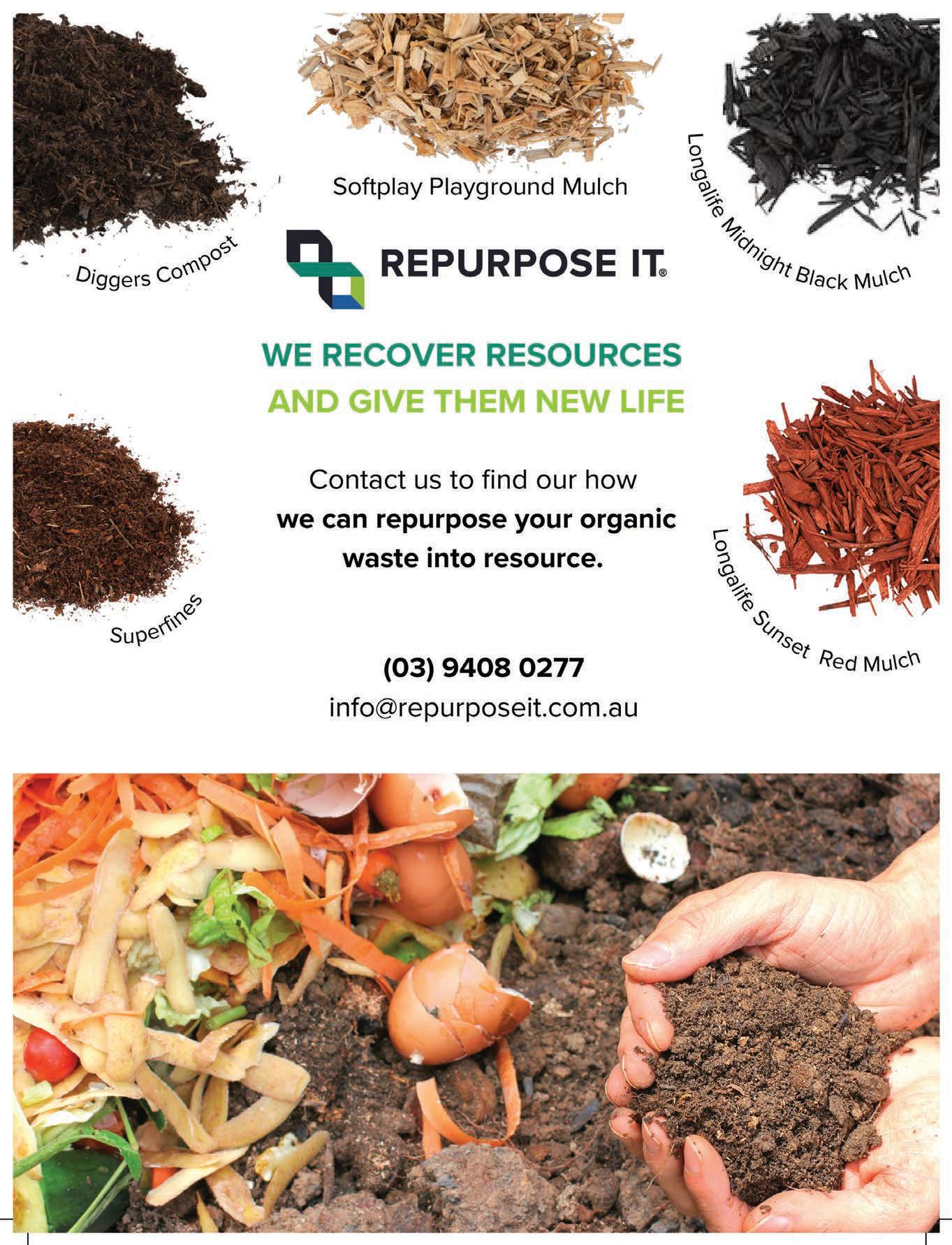
that scarcely anyone gives a second thought to as being a plastic problem yet is another piece of polypropylene film that could last hundreds of years in landfill. Recently, home compostable plastics have been added to the range.
All products have been laboratory tested for their biodegradability and home compostable materials are approved under Australian standards. Ross says Biogone also has several other benefits.
The additive used is inert and added in small amounts so it doesn’t change the properties of the plastic for any design considerations. It means the plastic is fully mainstream recyclable. Ross says REDcycle, a recovery initiative for postconsumer soft plastic, has approved Biogone products.
Because only a small quantity of the additive is required, it can be mixed in with conventional raw plastic pellets, similar to how a colourant would be added, so there is no need for product manufacturers to change any of their machinery.
If the products do end up in landfill where they biodegrade, the process creates methane which, in
many modern landfills, is captured to generate electricity as a coal power alternative.
Ross says Biogone technology could help Australia reach national packaging targets to have 100 per cent of packaging reusable, recyclable or compostable by 2025.
“There’s still questions as to whether we can reach a circular economy for plastic because it’s a molecular structure,” Ross says. “We’re relying on it being inherently intact, but every time you shred and modify it, you’re breaking that structure down. Plastic can only be recycled two to three times and then it has to be dumped.
“Advanced recycling, making oil from plastic to create new products, is creating a lot of excitement but the requirement for sorting to get the purity is going to be enormously expensive.
“This is a good bridging technology. It should be adopted a lot more to reduce the burden on the ever-increasing amount of plastic going to landfill.”
For more information, visit: www.biogone.com.au
26 / WMR / October 2022 FEATURED TOPIC – LANDFILL MANAGEMENT
Biogone plastics are being used to create everything from packing tape to gloves and cling wrap.


Softplay Playground Mulch oL n gal i f e MidnightBlackMulch oL n gal i f e SunsetRedMulchSuperfines Diggers Compost



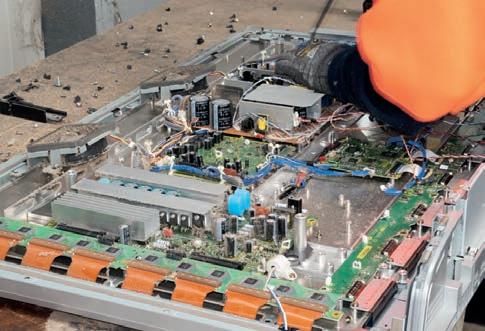


Your E-Waste, Our Responsibility Apart from eWaste recycling, Green Tech also provide the following services Secure Data Destruction Brand Destruction Some of our customers includes hospitals, schools, government agencies, telecommunication companies and commercial applications Currently actively involved with both the computer & television and battery product stewardship schemes Making the environment better for everyone John De Riviere (BDM): johnd@greentechnologyrecycling.com.au www.greentechnologyrecycling.com.au
Hidden potential
Jessica North has long held a desire to save the world one landfill at a time.
The Co-Chief Executive Officer of LGI, formerly Landfill Gas Industries, has travelled the world for the past 25 years helping to establish solid waste management projects, consult on waste strategies, and develop waste and carbon credit projects.

It was while working in Thailand that she realised waste management didn’t just require a technical solution, but behavioural change was also necessary. A change that is now resonating both globally and within Australia.

“So many communities within Australia have been directly impacted by the increasing frequency of severe climate events,” Jessica says. “Having
100-year floods twice in two years is not normal.
“People realise we have to move towards the global imperative of a decarbonised future. Carbon abatement of the biogas from landfills can play an important role.”
LGI recovers biogas, formed in landfills by natural anaerobic decomposition of waste, to abate carbon emissions and in some cases generate renewable energy.
It has developed and operates 26 biogas projects on landfill sites, mostly owned by local councils across Queensland, New South Wales and the ACT. Fifteen of these projects are registered to generate carbon credits and help councils costeffectively reduce their greenhouse gas emissions.

Biogas comprises about 50 per cent methane and 50 per cent carbon dioxide. The methane component can reach explosive levels, cause asphyxiation at high exposure and impact local ecology. It also has a global warming potential 28 times that of carbon dioxide over the same time.
Jessica says that while active landfill biogas capture and combustion has been occurring on some of Australia’s largest landfills since the 1980s and ’90s, many regional councils don’t have the resources or are unaware that their landfills could be viable carbon abatement projects.
Others assume their landfills are not producing enough gas for it to be worthwhile.
 LGI IS HELPING COUNCILS UNLOCK BIOGAS OPPORTUNITIES AT REGIONAL LANDFILLS TO ACHIEVE CARBON ABATEMENT TARGETS. CO-CHIEF EXECUTIVE OFFICER JESSICA NORTH EXPLAINS.
LGI IS HELPING COUNCILS UNLOCK BIOGAS OPPORTUNITIES AT REGIONAL LANDFILLS TO ACHIEVE CARBON ABATEMENT TARGETS. CO-CHIEF EXECUTIVE OFFICER JESSICA NORTH EXPLAINS.
www.wastemanagementreview.com.au / WMR / 29 FEATURED TOPIC – LANDFILL MANAGEMENT
LGI designed, built and operates a renewable power station in Bunya, Queensland.
for 60-80 per cent of a local council’s carbon footprint. Imagine, for a community that wants to sign up for net zero or a zero-carbon target, what a fantastic opportunity it would be to have a carbon abatement project both reducing that footprint and generating carbon credits to offset other council activities.
“The council would have a system that’s going to pull down their carbon footprint and meet their community targets.
“It’s a fantastic opportunity for a local government to lead the way and not only do the right thing by the environment and the community, but also have a great asset to take ownership of.”
Jessica says there have been few drivers to manage biogas from landfills. With few or no neighbours, the risk of migrating gas from a landfill causing concern is low.
credits are created,” Jessica says “Depending on the size of the site, it can be possible to return a portion of carbon credits to the councils. Some sites will generate enough credits to provide a commercially viable service.”
The biogas from landfill sector has been involved in delivering carbon abatement for many years, and with an increased focus on the climate impact of methane since COP26, this abatement effort has even more relevance.
“As an industry sector, we can deliver even more abatement, and help achieve Australia’s strengthened emissions targets. The ability to support projects through creation of carbon credits is key, especially where some of those projects are also being developed to produce baseload, fast-response, renewable energy,” Jessica says.

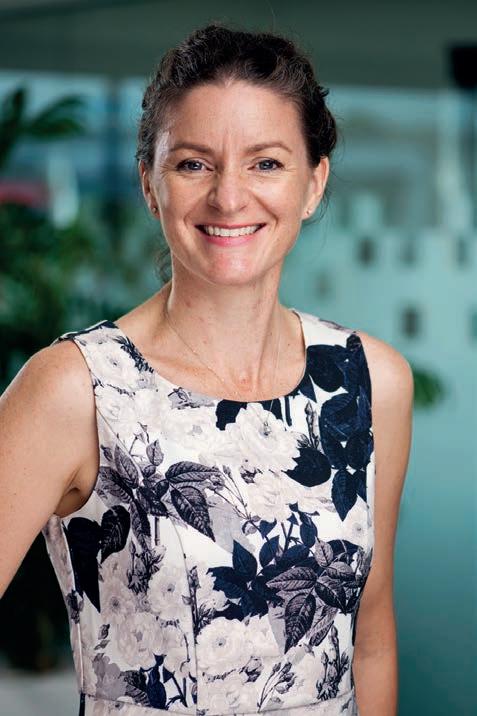
ownership of.”
Jessica North, Co-Chief Executive Officer, LGI
“As fossil fuel generators are retired and more intermittent renewables enter the system, the need for clean, dispatchable energy is becoming increasingly important. LGI’s renewable power generation being located on the distribution network also improves the reliability of power supply to local communities.”
Jessica encourages metropolitan and regional local governments not to underestimate the important role capturing biogas from their landfills can play in immediately reducing harmful greenhouse gas emissions and expediting a zerocarbon future.
For more information, visit: www.lgi.com.au
30 / WMR / October 2022 FEATURED TOPIC – LANDFILL MANAGEMENT
Jessica North, Co-Chief Executive Officer, LGI.




INNOVATION&RECYCLING AWARDS






www.wasteawards.com.au WASTE
JOIN US AS PART OF THE WASTE EXPO TICKETS NOW ON SALE HELD IN CONJUNCTION WITH Sponsors
A legacy issue
ENVIROPACIFIC IS REDUCING THE HAZARD OF FORMER LANDFILLS.

Nareas. Others have been capped and left idle once they’ve reached capacity.
stay buried. Solid waste, methane gas and leachate can escape from landfills decades after they’re no longer in use, creating environmental and health hazards.
That’s where environmental services specialist Enviropacific steps in.
The company’s remediation division has experience in landfill remediation projects, from retrofitting gas and leachate management at existing sites to full remediation involving recovery, processing and removal of the waste.
“Historically, the Environment Protection Authority might have overlooked legacy landfills but now it’s more active about managing these environmental impacts,” he says.
“If development is encroaching, the risk profile to people living or working around it increases.”
Methane gas is created as landfilled waste decomposes. Fred says that most old landfills don’t have the infrastructure to manage the collection and safe venting of the gas, which can pose a health hazard
Martin Kelly, Enviropacific Precontracts Manager, says off-site migration of leachate or methane gas can still be detected up to 20 years after a landfill has been closed.
“The waste is still there,” he says.
How to treat the problem is driven by the site itself, taking into account its current use and what’s been buried there previously.
Historical licences, weigh bridge records and a drilling investigation into the landfill mass can all help determine the remedial strategy.
www.wastemanagementreview.com.au / WMR / 33 FEATURED TOPIC – LANDFILL MANAGEMENT
Increased regulation and encroaching development have driven a rise in the need for mitigation works in the past five years.
Award from the Australian Land and Groundwater Association (ALGA).
The site, at Elyard Street, Narellan now sits in a prime development location and has the potential to produce economic and social benefits for the surrounding community.
Fred says the 16-month project was complex and required several remediation strategies. Being a former uncontrolled landfill, the range of contaminants was wideranging and included heavy metals, volatiles, degrading putrescible waste, asbestos, ground gas, and contaminated groundwater.
The project was partly to remove waste but also to recover and reuse as much recyclable material as possible. Materials for potential reuse were progressively excavated and processed onsite, with unsuitable contaminated materials disposed.
“There was 84,000 cubic metres of waste in the cell,” Fred says. “We recovered 17,000 cubic metres of soil and crushed concrete that was able to be reused rather than taken offsite.
communities, such as dust and odours, is also a key element in planning.
Martin says. “With remediation it’s what’s under the ground that is generally the problem. You expect everything because you really don’t know what has been tipped in there.”
Enviropacific recently constructed a methane interception trench for a site at Silverwater, to stop gas from a legacy landfill migrating to nearby industrial properties.
Martin says the 90-metre trench was filled with gravel and capped with a slotted pipe which forced the gas up to a carbon canister.
He says monitoring since the completion of the project shows that methane levels have dropped.
A similar ideology is being used to redirect methane coming from
Wales. A series of vertical bores will be the air before it reaches neighbouring residential properties.
Other strategies can involve erecting a cut-off wall around a landfill, or landfill cell, to stop gas or leachate migrating so it can possibly be extracted. In some instances, old landfill caps, traditionally a geo synthetic clay liner placed on top of a landfill to prevent water ingress, deteriorate over time and need replacing.
Some landfill remediation projects need more than a mitigation approach.
In 2018, Enviropacific remediated the former Narellan landfill back to a residential standard. The project earned Enviropacific the 2018 Sustainable Project Recognition
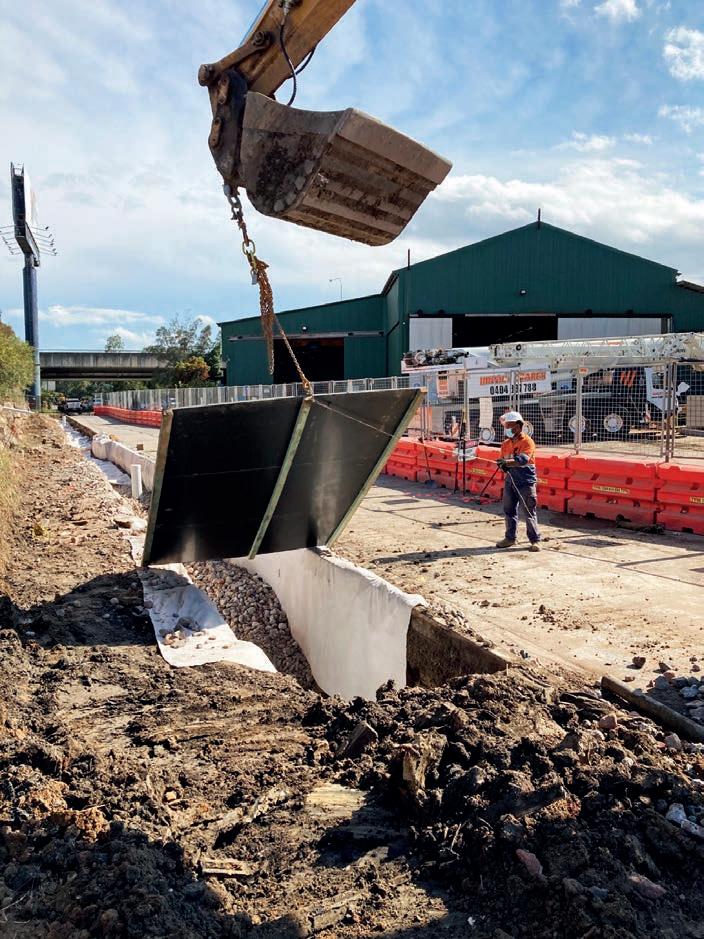
“There were a lot of trials and onsite testing to assess potential settlement and re-gassing from the processed material.
“We really had to align the environmental requirements with the geotechnical requirements.”
The project resulted in the extraction and treatment of 11 million litres of landfill leachate, the reuse of two million litres of surface water, excavation of 84,000m3 of uncontrolled landfill materials, crushing and recovery of 5000 cubic metres of concrete and brick, recycling more than 150 tonnes of steel and other recyclables and recycling and shredding more than 4000 waste tyres.
For more information, visit: www.enviropacific.com.au

34 / WMR / October 2022 FEATURED TOPIC – LANDFILL MANAGEMENT
Enviropacific constructed a methane interception trench in Silverwater.













The big boys of compaction
JOHN GLOSSAT, FROM TUTT BRYANT EQUIPMENT, INTRODUCES BOMAG’S ALL-NEW 57-TONNE BC 1173 RB-5 LANDFILL COMPACTOR.
BOMAG has been a pioneer in compaction technology for more than 50 years – the company was founded in 1957 to manufacture the world’s first double vibratory roller. Since then, it has continued to innovate for the road construction and waste management industries.
One of the latest additions to BOMAG’s waste management range is the BC 1173 RB-5, a 57-tonne landfill compactor designed specifically for the optimal compaction required by large municipal waste facilities.
PARTNERS IN COMPACTION
In Australia, BOMAG has been distributed by Tutt Bryant Equipment since the two companies entered a partnership in 1986. John Glossat, Tutt Bryant Equipment’s National Business Development Manager, is enthusiastic
about what BOMAG’s latest offering can offer Australian landfill operators.
“When it comes down to it, best compaction results are achieved when the material is evenly distributed,” says John. “Compaction is a significant contributor to the lifetime of any landfill. Not only that, but every additional cubic metre filled is money in the bank for waste disposal sites.
“Compaction is BOMAG’s core competence. Their unique wheel geometry, scraper beams and stable ground contact combine to achieve even compaction.”
The BC 1173 RB-5 uses polygon disc wheels fitted with premium teeth – with a wear warranty of 10,000 working hours (pro rata) – for crushing, kneading and effective compaction to depth. An oscillating articulation joint provides good load distribution to the
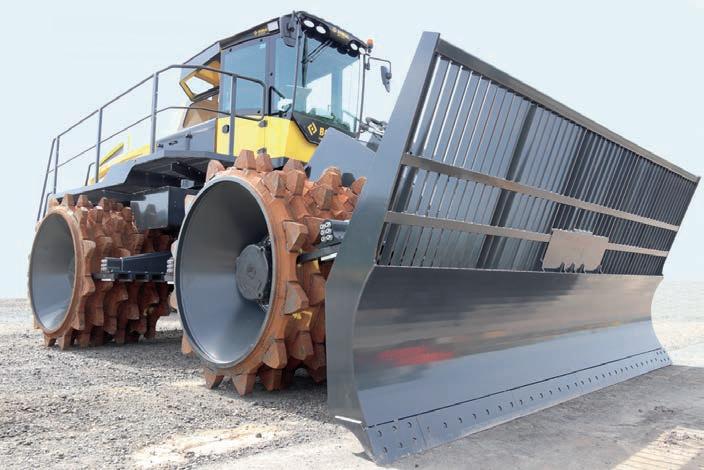
compaction wheels, while scrapers and wire cutters guarantee clean wheels during operation.
The offset wheels ensure gaps in the covered area are closed completely and evenly on a second pass.
“This system ensures BOMAG compactors can work cleanly and continuously,” John says. “Because only clean tools can maintain consistent compaction and traction.”
The BC 1173 RB-5 is fitted with a Cummins X15 engine, available in either Tier 3 or StageV Tier4f configurations. The engine provides high output torque along with BOMAG’s EcoMode, which continuously regulates the engine based on the current load and required speed.
According to BOMAG, EcoMode reduces fuel consumption by up to 30 per cent, and lower engine speeds reduce wear on the drive components, extending the life of the machine and its parts.
“We also offer an option to have the machine fitted with a Mercedes Benz MTU OM473LA StageV Tier4f if preferred,” John says.
KEEPING IT SIMPLE
John says the BC 1173 RB-5’s generous platforms and wide engine openings with a fully hydraulic bonnet make daily maintenance and service simple.
“The drive has not been forgotten either,” he says. “The oversized, high pressure hydraulic components
36 / WMR / October 2022 FEATURED TOPIC – LANDFILL MANAGEMENT
BOMAG’s system of scrapers and wire cutters ensures clean wheels.
will ensure continuous operation and a long life cycle. It features four pumps and four wheel motors, which maximise gradeability and pushing power. It’s a more efficient system with fewer components.”
The machine is also specifically designed to cope with the variety of unpredictable contaminants landfills can present. The sealed base frame and engine compartment protect against damage from debris, while the combination of high air intake for cooling and combustion with the
reversible air flow keeps the need for cleaning to a minimum.
SAFE, SMART, COMFORTABLE
BOMAG landfill compactors come equipped with a range of safety features as standard, including a rear-view camera with colour display, a ROPS/FOPS cabin with all-round safety glass, and large electronicallyadjustable mirrors.

John is also impressed by the BC 1173 RB-5’s spacious cabin, which features air conditioning, heating, adjustable seat
with air cushioned suspension, and is well sealed for safety and reduced noise.
“It’s more comfortable than the lounge at home,” he laughs. “The display is brilliant and easy to read, and the controller layout is great – everything’s at your fingertips.”
The machine is kitted out with smart features including telematics, cruise control, as well as BOMAG’s Autoblade and Blade Stepper – which allows for the precise adjustment of dozer blade height to meet landfill requirements. This also enables frequently used blade positions to be saved and retrieved at any time, streamlining operation.

“The basis for a landfill’s profitability is the optimum use of capacity, which you achieve through the best possible compaction of all waste materials,” John says.
“BOMAG compactors get this right because they’ve been specifically designed by people who understand the extreme conditions found on landfill sites.”
The BOMAG BC 1173 RB-5 is available now ex-factory.
For more information, visit: www.tuttbryant.com.au
The sealed base frame and engine compartment protect against damage from debris.
The BC 1173 RB-5’s spacious cabin is designed for operator comfort.
www.wastemanagementreview.com.au / WMR / 37
A sense of control
WITH THE VEGAPULS 6X, IT’S NOT JUST THE SENSOR THAT COUNTS, BUT WHAT CAN BE ACHIEVED WITH IT IN APPLICATIONS. WASTE MANAGEMENT REVIEW EXPLAINS.
Traditionally, the search for a suitable radar sensor begins with the question, which frequency would work best for this particular application? 26 GHz, 80 GHz? Or perhaps 6 GHz would be better?
This is followed by thoughts about the properties of the media and how it could influence the measurement, as well as the specific installation environment. Furthermore, the temperature range, or the presence of aggressive chemicals, may give cause for concern.
Will a standard process fitting be sufficient, or would special materials that meet the highest requirements be the right choice, if only because the user is not sure and wants to be on the safe side? And what else should be considered if the sensor is to measure great distances or be exposed to wind and weather all year round?
With such a wide choice, you also have to select the right choice. Because the areas of application are becoming more multi-faceted and processes more complex, the buyer needs a good understanding and overview of what’s on offer.
ONE FOR EVERYTHING
Until now, choosing an instrument was a laborious process and often involved a lot of questions and product research. VEGA is now turning this process inside out with its new VEGAPULS 6X.
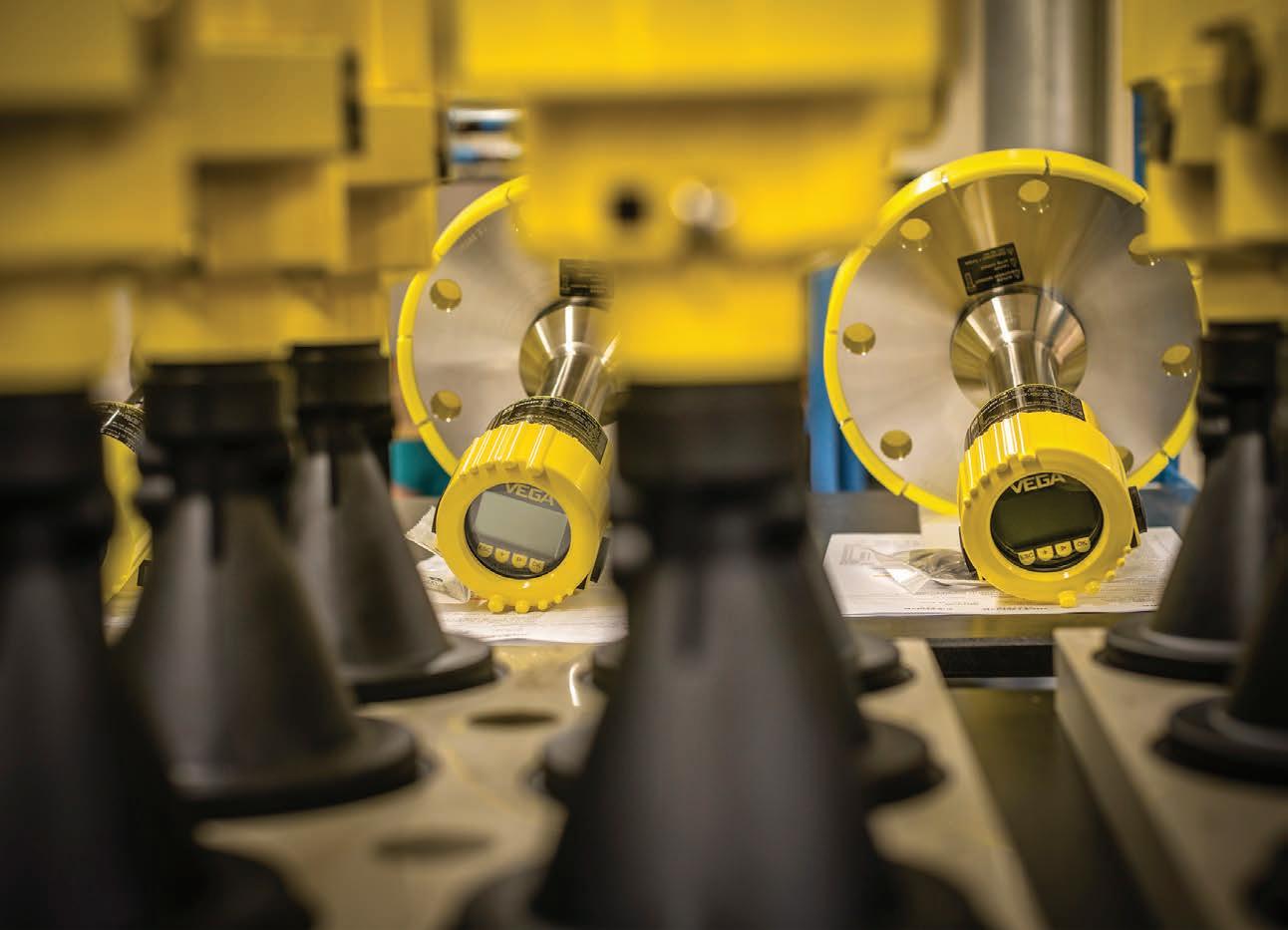
and that they’ll reach their goal faster with it, makes a big difference in their everyday operations.”
VEGAPULS 6X is seen by VEGA as one sensor for all applications. Selecting the right frequency or determining the DK value of the medium are no longer obstacles, because choosing the right sensor specifications has become easier.
The new configurator asks for the type of application and then determines which sensor version is required. The procedure now consists of a few mouse clicks.
Of course, an advisory discussion with a VEGA radar specialist is still a good alternative to the configurator. In any case, the result is simplicity for users and a measurement solution that delivers results independently of the media properties, process conditions, vessel shapes and internal installations.
Functional safety (SIL), a system for self-diagnosis, was developed
“Ultimately, it’s not the sensor that counts, but what the users can achieve with it in their individual applications,” says Florian Burgert, one of the product managers who has been involved in the development from the beginning.
“Just knowing that they’ve chosen the best possible instrument solution,
ALL-ROUND PROTECTION
VEGAPULS 6X offers technical innovations – it is equipped with a safety concept. Functional safety is guaranteed, as it conforms with all the requirements of Safety Integrity Level. The certified sensor has SIL characteristics and provides the necessary operational

38 / WMR / October 2022 FEATURED TOPIC – WASTEWATER The radar sensor is custom-assembled at VEGA on the basis of the specified parameters and process conditions.
according to the latest IT security standard.
safety to minimise risks in safety-related applications. Another important focus is “cyber security”. In this regard the VEGAPULS 6X conforms to IEC 61511, which fulfils the strictest requirements for security of system access and communication control. It thus guarantees process security, right through to the control system.
An important third aspect of its safety features is its self-diagnosis system. It continuously monitors the function of the sensor and recognises if it has been impaired in any way.
Central to these features is a new, second-generation radar chip directly from VEGA. Because there was no chip available on the market that would have met all requirements, the research and development team set to work to design one themselves, from scratch.
“The result pretty much consolidates our entire radar experience from three decades,” says VEGA product manager Jürgen Skowaisa. “In its scope and functionality, the chip is unique in the whole world.”
It is characterised by its low energy consumption, high sensitivity, scalable architecture and universal applicability. The radar antenna system and the chip are connected to each other, without any cable.
INNOVATION OF VALUES
Beside the technical highlights, the VEGA radar team addressed questions that went far beyond product design: What will be the long-term impact of this technology on the people who use it? How can their work be simplified? What future goals of industry can be realised with the new technology?
This approach gave rise to the impulses that make VEGAPULS 6X different.
By considering the users and the process conditions of their applications, other points came into focus. These include the challenges in using measuring instruments, such as complicated adjustment procedures, the constant pressure to increase efficiency, and time constraints in general.
FOCUSING ON THE APPLICATION
The task of level sensors is to help users and make it easier for them to monitor their industrial processes. They often make processes more controllable and efficient, but even if they are easy to use, the process of selecting the right one for an application can still be difficult.
Skowaisa sums up in two words the strategy VEGA is pursuing with VEGAPULS 6X: “Maximum simplification.”
He makes a comparison: “Until now, there were many different sensors that could be used for an application. But today, with VEGAPULS 6X, there is one sensor for all applications.”
Even set-up and commissioning, he says, has been reduced to a minimum, requiring now a few clicks and the input of basic data.
“Our customers can even order a sensor that has been factory calibrated, customer-specific down to the last detail, which only has to be installed and connected,” says Skowaisa.
RADAR MADE FOR PEOPLE
With VEGAPULS 6X, VEGA has rounded out its radar measurement technology with four innovations: More safety and self-diagnosis, new radar chip technology, new application possibilities and simpler adjustment.

“Furthermore,” says Skowaisa with emphasis, “our technology has reached such a high level today that reliable function is no longer the issue.
“The only risk now is choosing the wrong sensor.”
The VEGAPULS 6X provides the tools to get right sensor version for the application in 99 per cent of all cases, while keeping experienced application engineers on standby to help with the special, more difficult applications.
For more information, visit: www.vega.com/en-au
www.wastemanagementreview.com.au / WMR / 39
The VEGAPULS 6X uses a second generation in-house developed radar chip, that sets new standards in performance and safety.
Keeping it green
Since March 2021, Green Solutions Wide Bay has provided a free, environmentally-friendly green waste disposal service for residents in Queensland’s Bundaberg Region.
Established as an offshoot of Greensill Farming – one of Australia’s largest producers of sweet potato, sugar cane and peanuts – Green Solutions collects and processes green waste into compost and mulch to enrich its parent company’s crops.

Nathan Freeman, Green Solutions Wide Bay General Manager, says the compost demanded by Greensill’s year-round sweet potato farming necessitated a dedicated facility –one that would support both the business and community in a quest for sustainability.
“It’s a state-of-the-art open windrow composting facility,” he says. “We take green waste from the public for free, which we process into compost and mulch for our farms.
“We’ve got mums and dads dropping off their lawn clippings, as well as lawn mowing and tree lopping businesses.
We also serve several not-for-profits and government agencies, such as the Bundaberg Regional Council.”
The business has scaled its operation up quickly, processing about 10,500 tonnes of raw material in its first year, and is projected to reach 20,000-tonne by the end of its second.
SUSTAINABLE COMMUNITIES
While supplying compost for Greensill Farming is the primary focus of the
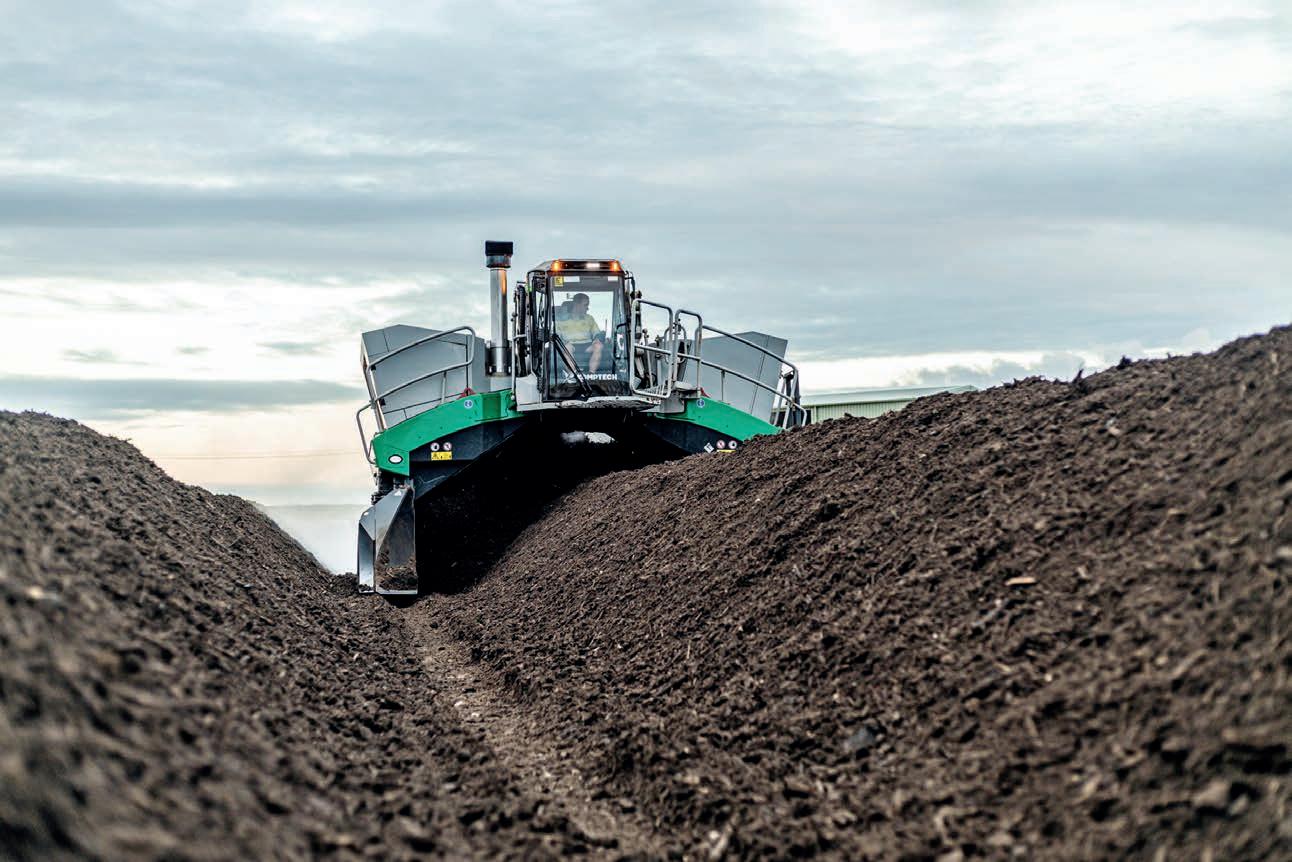
Green Solutions business, supporting and engaging with the local community is also a driving force.
A free green waste disposal service is valuable to the community, as is offering good quality compost and mulch products for purchase.
Green Solutions has courtesy trailers available every day of the week for both collection and delivery. But Nathan says it’s important to give back to the community in other ways too.
GREEN SOLUTIONS WIDE BAY IS
SPREADING THE WORD OF QUALITY
COMPOST THROUGH THE
LOCAL COMMUNITY.
40 / WMR / October 2022 WASTE MANAGEMENT IN ACTION – ORGANICS
The Komptech Topturn X55 can deliver water to the windrows as it turns them.
Nathan Freeman, General Manager, Green Solutions Wide Bay.
The business recently established the Sustainable Schools initiative – a way to engage the next generation on the benefits of recycling green waste.
Nathan says the program is not just about teaching good waste management practices, but is designed to provide students an appreciation of the circular process of food production.
“We donate compost to participating schools, which they can use for their veggie patches and gardens,” Nathan says. “We also send one of our agronomists out to consult on types of plants, and how to get the most out of their gardens.
an understanding of how healthy soils create healthy plants.

“One of the first participating schools grew their own veggies, which they then used in their tuckshop – so they were able to generate an economic return, which was invested in the next year’s crop.”
Nathan says Green Solutions is expanding the program into tertiary education, and is currently working with a local university to narrow down a PhD candidate to support in a threeyear full-time role.
“We’ll work together to build our understanding of what’s happening
“Green waste material is ground up with the Crambo – either at the facility or offsite,” Nathan says. “Then we put it into the windrows, where we run the turner across the top to turn the product. Once that process is complete, it goes through the drum screen at the end.”
The decision to go with Komptech machinery started with the Crambo shredder, as its lower speed high-torque operation enabled the processing of a wide range of material – something Nathan says might challenge a highspeed grinder.
“We get material in a fairly raw form, and the Crambo is able to shred large, bulky items like tree stumps,” he says.
From that point, the business went with Komptech for the drum screen and, most crucially, the Topturn compost turner.
Green Solutions processes green waste from councils, businesses, and the community.
turner, and a Nemus 2700 drum screen.
“The Topturn is very quick, and can deliver water directly into the windrows as it goes,” Nathan says. “We can turn a 100-metre-long windrow in under six minutes.”
He says it’s clear a lot of thought has gone in to how Komptech machines are designed, which is reflected in how robust and reliable they’ve been for Green Solutions. And he’s confident that any potential issues can be quickly resolved.
“The Komptech CEA team has been a great support for our business,” he says.
“They provide good sales support and good service. They’re always very keen to come and visit the site, and they’ll help us change out and trial different screens before we invest in something new.
“They provide technical support to our in-house service team if needed. They’re always just a phone call away.”
For more information, visit: www.greensolutionswidebay.com.au
www.wastemanagementreview.com.au / WMR / 41
Realise your landfill’s carbon abatement potential

Did you know that your landfill can actually help reduce local greenhouse gas emissions? If not captured, biogas from landfills can account for 60-80% of a local council’s carbon footprint.
Even small (open or closed) landfills can produce enough gas to support financially viable biogas extraction.
LGI’s biogas extraction systems capture and combust the methane-rich biogas converting it into less harmful carbon dioxide. Every tonne of CO2 equivalent that an LGI system prevents your landfill from emitting, could earn Australian Carbon Credit Units.

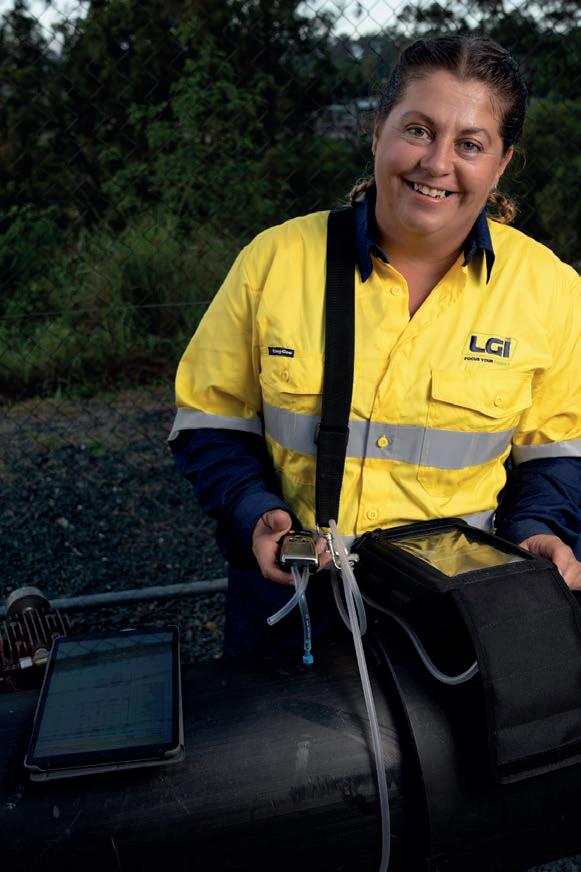
Don’t underestimate the value of your landfill. Biogas extraction from landfill is proven technology and is available now to drastically reduce your carbon emissions.
LGI provides best practice biogas systems, often at no cost to Councils! Contact us today to discuss carbon abatement opportunities for your landfill.
www.lgi.com.au 07 3711 2225
Fulfil community expectations
Meet
decarbonisation targets
Pathway
to renewable energy
Two of a kind
A SHARED VISION FOR RESOURCE RECOVERY HAS EVOLVED INTO A RANGE OF LANDSCAPE PRODUCTS THAT CLOSE THE LOOP ON WASTE.
It’s no accident that two trailblazers in resource recovery have combined to become one of the biggest suppliers of garden materials to the Victorian market.

Anthony van Schaik, Co-Founder and Director of Repurpose It, says there was always an intention to blend the knowledge and skills of organics recycling with the recovery of construction and demolition materials.
But as a 10-year-old loading pine bark from his family farm onto the back of a Bark King truck, even he couldn’t have foreseen the influence they both would have on the landscape market.
“After a 40-odd year relationship we’ve merged what we know is a success story between two enterprises,” Anthony says. “We all see the synergies and benefits.”
Repurpose It acquired Bark King in 2021, allowing the company to expand its geographical footprint with new sites in Hallam and Montrose in south-east Melbourne

and give it a touch point from receiving wastes right through to distributing the resources recovered to the end consumer.
It also inherited the history and learnings of a company that has been at the forefront of organics recycling transformation and preserving Victorian resources for future generations.

Ashley Johnston, General Manager Organics, and a descendant of Bark King’s founding family, says the company has never shied away from a challenge or being the first to try something.
“Harold, the Founder of Bark King, was always forward thinking,” Ashley says. “He was willing to take a gamble in doing something.”
That gamble began in 1975 when, unemployed and with two trucks, Harold and his wife bought their first load of pine bark to sell to a garden supplier in Melbourne.
“Historically, it was cheaper and easier to put pine bark and timber mill residue into a hole or burn it in a

firepit,” Ashley says. “Bark King were pioneers in recycling timber mill residues and introducing it into the landscape market.”
That early product was raw pine bark, straight off the tree, and the size of the palm of a hand. In 1999, the Johnston family purchased property in Montrose to source and screen forestry residues themselves.
Back then, says Stuart Johnston, Manager Plant and Equipment Landscape Materials and a descendant of the founding family, there was no such thing as a purpose-built processing plant for organic materials.
The quarry screens that were available were designed for heavy soil types, not lighter, organics material. Stuart re-engineered, converted or built from scratch the equipment needed to create new products.
Shredding and resizing pine bark became the first value-add to the landscape product range. The next was finding raw materials from other sources, such as waste timber
www.wastemanagementreview.com.au / WMR / 43 WASTE MANAGEMENT IN ACTION – ORGANICS Repurpose It diverts more than 150,000 tonnes of organic waste from landfill each year.
pallets or clearing storm damage. The company was also the first in Victoria to introduce a water-based dye to create coloured mulches, offering a sustainably sourced timber mulch that resembled redgum chip.

Today, the company diverts more than 150,000 tonnes of organic waste from landfill each year. Organic residues are processed at three sites and the product range has grown to include bark, coloured decorative bark, composted and recycled timber mulches, Softplay, compost and soil.
Softplay is an Australian Standard certified soft cushioning mulch, free of sharp materials and designed for playgrounds. Ashley says it’s from 100 per cent plantation pine chip, is sustainable, and a product of choice for councils Victoria.
Developing new products is an area both he and Stuart are
keen to explore further as part of Repurpose It.
“Since developing the Repurpose It relationship we’re able to value add more waste products further down the line,” he says. “We’ve gone from mulch to compost and soil conditioner. I’m very proud of that.”
Anthony says Bark King ‘fits’ into Repurpose It.
“In the first year of being one company we’ve returned more than 100,000 tonnes of soil back to the market that otherwise would have gone to landfill,” he says.
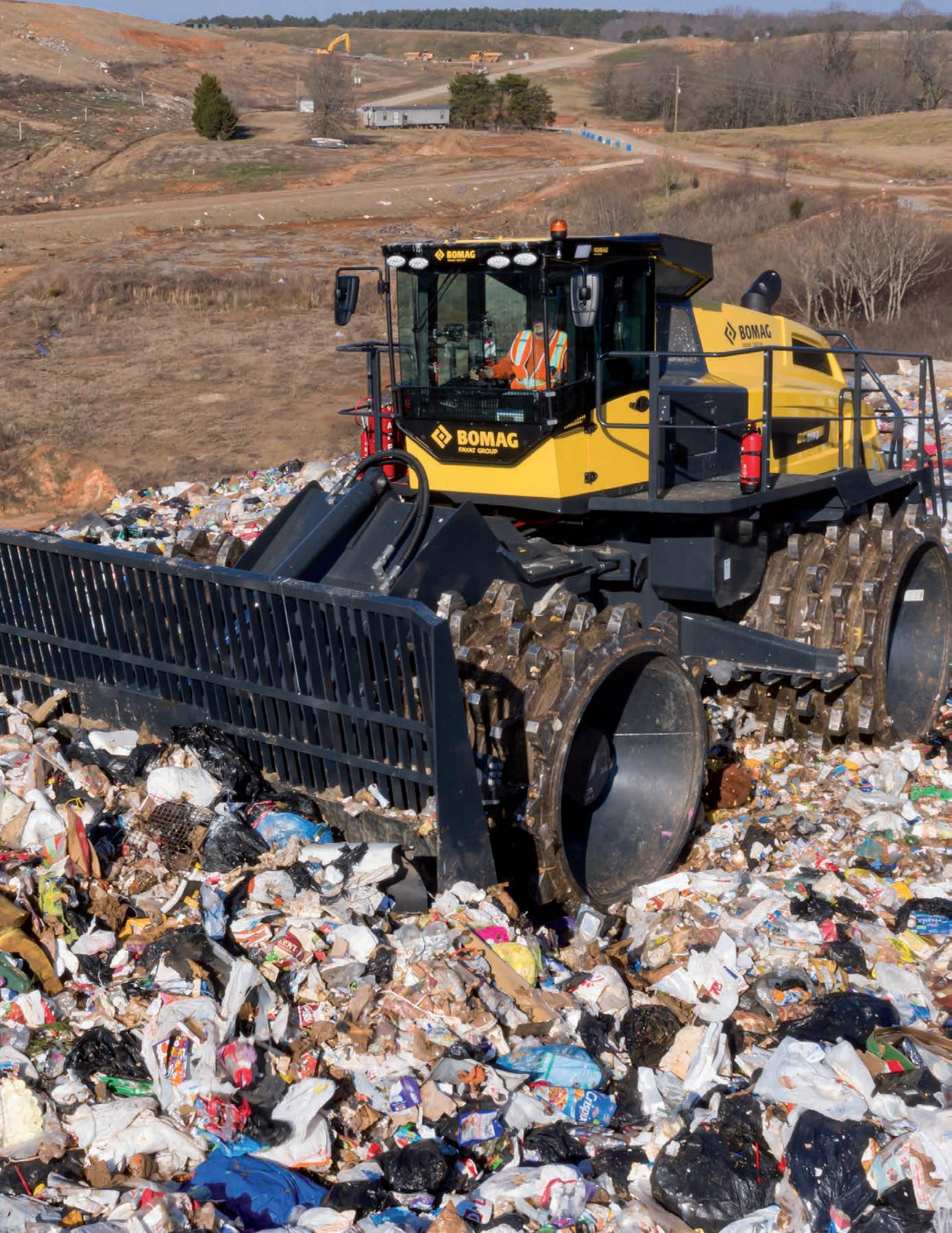

“Blending by-products from our Bark King landscaping range with Repurpose It’s products has opened another market for us.
“It’s not by fluke that this has happened.”
For more information, visit: www.repurposeit.com.au
44 / WMR / October 2022 WASTE MANAGEMENT IN ACTION – ORGANICS
George Hatzimanolis, Repurpose It Chief Executive Officer, Anthony van Schaik, Stuart Johnston and Ashley Johnston.
Repurpose It continues to develop its landscape range.
BOMAG refuse compactors in the 41 to 57 ton-class have many convincing design advantages that have been tried and tested over decades of practical use on landfill sites. Together with an uncompromising quality philosophy, they are up to every challenge on modern landfill sites. The result is a refuse compactor with outstanding efficiency, which uses the latest technology to combine high productivity with low operating costs and excellent serviceability.


BOMAG’s Operator Support System helps optimise performance and relieves the burden on drivers.



brisbane | sydney | melbourne adelaide | perth tuttbryant.com.au 1300 658 888 BC1173RB-5 ECONOMICALLY OUTSTANDING EFFECTIVE & EFFICIENT






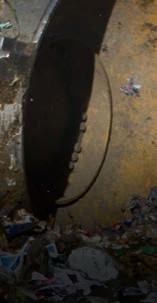

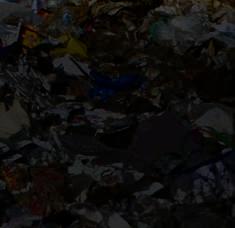


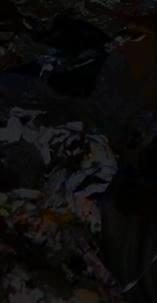

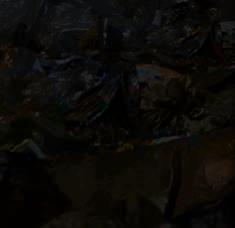







Responsible recycling
The company initially processed tyres for land engineering purposes, including drainage applications and roadways. But the waste collector and processor, based in Somerset, England had a vision to be financially and environmentally responsible. It’s now on a mission to deliver zero waste tyre recycling within the UK.
Since 2015, Black-Ram has been focused on material and energy
NEW OBJECTIVE


In 2014, Black-Ram was at a crossroads. The tyre recycling industry was changing, and the Black-Ram leadership team was considering moving away from construction towards material and energy recovery.
Aware that the change in direction would require specialised tyre shredder equipment, Black-Ram



most opportunities.
It also hoped to separate and recycle steel from the tyres, prompting the need for heavy-duty equipment.
By 2015, the Black-Ram team had started researching what machines were on the market to chop and process tyres for alternative fuel and feedstock use.
It discovered that ELDAN had tyre shredder equipment that would allow
www.wastemanagementreview.com.au / WMR / 47 WASTE MANAGEMENT IN ACTION – TYRE RECYCLING
Black-Ram Recycling has relied on Eldan equipment since 2015.
it to separate steel from the tyres and produce tyre chips for a variety of further applications.
When the Black-Ram team took a tour of ELDAN’s Denmark factory it was impressed with what it saw.
STRATEGY IN PLACE
In 2015, negotiations began between Black-Ram and ELDAN to provide a tyre shredder that would turn whole passenger car tyres into rubber chips for alternative fuels and feedstock.
ELDAN recommended and delivered a hydraulic Multi-Purpose Rasper MPR203 HD in 2016. The ELDAN team, in conjunction with Black-Ram engineers, oversaw the installation and provided online equipment monitoring assistance to ensure prompt problem resolution.
After the initial installation, the teams realised modifications would be necessary to achieve the desired product.
In collaboration with ELDAN’s research and development
With the modifications in place, Black-Ram began to see the realisation of its new direction, and could transform passenger car tyres into rubber chips.
The team determined that greater capacity was needed and ELDAN recommended the installation of a Super Chopper in front of the MultiPurpose Rasper, which increased the capacity two to threefold.

“One reason we chose ELDAN was their lead time on parts. In this industry it’s critical to minimise downtime,” says Henry Hodge, Owner, Black-Ram.
“I would absolutely recommend ELDAN. You get what you pay for. We’ve tried other suppliers for parts, but we keep coming back to ELDAN.”
THE OUTCOME
The Black-Ram team achieved its goal of creating high volumes of quality clean-cut rubber chips. The
Chopper SC1412 FD150 in 2020, Black-Ram added a complete tyre chip line with a Super Chopper and a Multi-Purpose Rasper in 2021.
Using the customised tyre shredder equipment, Black-Ram was able to reach its goals regarding capacity, steel wire recovery, output size, and flexibility.

To date, Black-Ram has installed four ELDAN tyre shredders, allowing the company to increase local employment and expand the geographic footprint of the business. It currently services more than 1250 garages in the south-west and has plans to continue expanding.
The Black-Ram team continues to rely on ELDAN for reliable parts and online monitoring assistance and is pleased with the relationships they have built with the ELDAN team.
For more information, visit: www.eldan-recycling.com
48 / WMR / October 2022
To date, Black-Ram has installed four ELDAN tyre shredders.
WASTE MANAGEMENT IN ACTION – TYRE RECYCLING
Waste

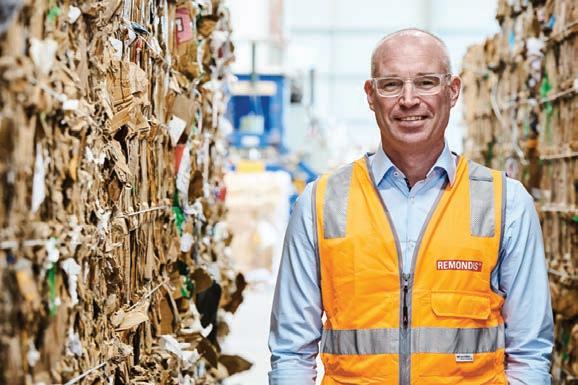

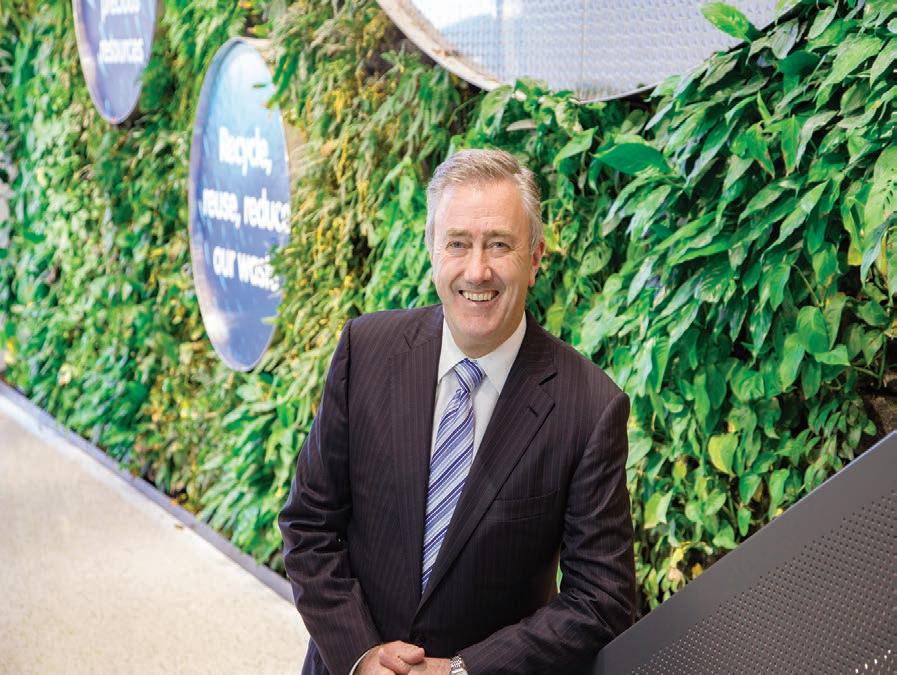


SUBSCRIBE NOW! FEATURES Rapidresponsetohazardousincidents Newagenttakesstingoutoflithium-ionbatteries Greasingthewheelsofsustainability Unlockingthecirculareconomy PROUDLY SUPPORTED BY: Waste Management Review www.wastemanagementreview.com.au 2022 | AUGUST | ISSUE 65 A new environment and new opportunities energise the team at Ecocycle Taking komptechcea.com.au 1300 788 757 DELIVERING A GREENER FUTURE Komptech CEA is a leading supplier of machinery and systems for the treatment of solid waste through mechanical and mechanical biological treatments, as well as the treatment of biomass as a renewable energy source. Komptech CEA is proud to provide innovative solutions for handling waste and biomass. Komptech CEA’s extensive range of products cover all key processing steps in modern waste handling. At Komptech CEA the focus is always on innovative technology and solutions ensuring maximum benefit to the customer. Like to know more? why not speak to one of our team today? TERMINATOR Where Function Meets Technology A slow-running, single-shaft shredder suited to all types of waste. CRAMBO Less Fuel, More Power Ideal for shredding all types of wood and green cuttings. MULTI STAR Screening with a Star Makes waste wood and biomass processing highly efficient. TOPTURN X The Ideal Combination of Performance and Design With a sturdy frame, powerful hydraulics and large drum, the Topturn X is ready to handle any work situation. NEMUS Robust and Reliable Combining the practice-proven virtues of its predecessors with new solutions for even greater performance. AXTOR Shredding and Chipping Made Easy One of the most versatile machines around for processing wood and green cuttings. SHREDDERS TROMMEL SCREENS STAR SCREENS WINDROW TURNERS FEATURES Tyre recyclers call to arms for domestic markets The next generation of WtE The first dual waste collection truck heads Down Under Celebrating women in industry PROUDLY SUPPORTED BY: Waste Management Review www.wastemanagementreview.com.au SEPTEMBER 2022 2022 SEPTEMBER ISSUE 66 As REMONDIS celebrates 40 years in Australia, CEO Jochen Behr predicts significant changes for the nation’s recycling industry. Working for the future komptechcea.com.au 1300 788 757 DELIVERING A GREENER FUTURE Komptech CEA is a leading supplier of machinery and systems for the treatment of solid waste through mechanical and mechanical biological treatments, as well as the treatment of biomass as a renewable energy source. Komptech CEA is proud to provide innovative solutions for handling waste and biomass. Komptech CEA’s extensive range of products cover all key processing steps in modern waste handling. At Komptech CEA the focus is always on innovative technology and solutions ensuring maximum benefit to the customer. Like to know more? why not speak to one of our team today? TERMINATOR Where Function Meets Technology A slow-running, single-shaft shredder suited to all types of waste. CRAMBO Less Fuel, More Power Ideal for shredding all types of wood and green cuttings. MULTI STAR Screening with a Star Makes waste wood and biomass processing highly efficient. TOPTURN X The Ideal Combination of Performance and Design With a sturdy frame, powerful hydraulics and large drum, the Topturn X is ready to handle any work situation. NEMUS Robust and Reliable Combining the practice-proven virtues of its predecessors with new solutions for even greater performance. AXTOR Shredding and Chipping Made Easy One of the most versatile machines around for processing wood and green cuttings. SHREDDERS TROMMEL SCREENS STAR SCREENS WINDROW TURNERS
Management Review Delivers high quality, multi-platform media communications that showcase the world-class performance of the Australian waste management and resource recovery industries. Waste Management Review is published 11 times a year and contains: • A news round-up • Interviews with industry leaders • In-depth profiles on innovative people, facilities and services • Coverage on international developments • Updates and analysis on new regulations and policies • Successful supplier/client showcases • Details of new-to-market products and equipment. www.wastemanagementreview.com.au and get every Waste Management Review magazine issue delivered direct to your door.
Seal of approval
equipment business has built its foundation on earning the trust of its customers.
Now customers can have more confidence that they’re investing in a company that benefits Australia first, with Lincom Group fully certified as an Australian Owned business.
The certification is part of a strategic plan to strengthen the business as it enters a new era.
Announcing the certification on the company’s website, Stephen Watterson, Chief Executive Officer, said Lincom Group has always been proud of being an Australian company.
“For us, it’s about being part of a community that supports one another,”
right direction and this year seems the perfect time to make it official and celebrate it.
“We’re enthusiastic about giving back to our community and building on the opportunities ahead.”
It’s that value, says John Edwards, Chief Operations Officer, that has allowed the company to grow from a backyard operation 27 years ago to a business with more than 50 staff operating across Australia, New Zealand, Papua New Guinea and the Pacific Islands.

Today, Lincom Group is a parent company for a range of specialised businesses supplying various industries with sales, service and hire of
Queensland is also a manufacturing facility for custom fit-outs, safety guards, machine rebuilds and repairs. A national spare parts distribution centre and field service fleet for after-sales support are based at the same site.
John says that Lincom Group has been good at understanding its clients, their needs, and their challenges.
“Lincom Group has been getting to know their clients well before it was a thing in management textbooks,” he says. “By talking with people we’re leveraging our relationships with clients. If we see something we think we can help them with, we will.”
John says company Founder Roy Watterson was a believer in seizing
50 / WMR / October 2022 WASTE MANAGEMENT IN ACTION – AUSTRALIAN OWNED
The Lincom Group team takes time out to celebrate its successes.
opportunities, so would have been proud of the Australian Owned certification as the company enters a new era under the guidance of the next generation.
“Roy was always saying that you can’t withdraw from any opportunities or initiatives that pop up,” John says.
“We’re looking at a number of things we could finetune, and certification was part of that.”
The Australian Owned trademark is a high-value asset and a mark of Aussie authenticity. Qualifying for it is no easy feat.
team broke down the company structures. While it was a rigorous procedure, he says the company felt it was important to “make our home patch better”.
Lincom Group works with manufacturers who are up to strict Australian quality standards across a diversified portfolio of brands.
“We are very parochial in Australia,” John says. “And there’s a bit of a rise in nationality, which is important in these challenging times.
owned, and all the profits are kept in Australia.”
While proud of the Australian Owned certification, John is equally as proud of the company’s recent Great Place to Work certification. He says it’s testament to the values the company was built on, and that continue to be instilled today.

John says the lengthy certification process gave the company an insight into what staff thought was important and what could be improved.
More than 82 per cent of respondents to an employee survey said Lincom Group was a great place to work, but the company is not resting on its laurels. A change group has been established to give state managers a forum to raise new ideas and more staff engagement is being encouraged.

It’s the little things, John says, that make a difference for employees seeking a good work-life balance.
“We know we’re good. We want to go that next step.”
For more information, visit: www.lincom.com.au
www.wastemanagementreview.com.au / WMR / 51
Grahame Noble (Warranty Claims Manager), Renata Hjelmstrom (Group Marketing Manager) and Ilka Swan (Accounts Officer).
Jess Vosseler (Boilermaker) and Alex Flanagan (Area Sales Manager).
Smooth operators
COMMUNICATION AND TRUST HELPED HASTINGS DEERING DELIVER A COMPLEX AND TIME-SENSITIVE OPERATION AT TWO BRISBANE WASTE TRANSFER STATIONS EARLIER THIS YEAR.
In 2018, Cleanaway and the Brisbane City Council formed the Resource Recovery Innovation Alliance (RRIA), a ten-year partnership for the management of Brisbane’s waste streams.
Under the alliance, Cleanaway operates four council resource recovery centres – centrally located to service residents around the greater Brisbane area – as well as one engineered landfill.
Leading the Cleanaway side of the RRIA is Shannon Gorman, Alliance Operations Manager.
Shannon says it’s a unique partnership, one well-suited to the waste management needs of Australia’s most populous local government area.
“It’s the largest post-collections contract in the southern hemisphere,” he says. “We deal with more than 500,000 tonnes of waste and
recyclables each year, so it’s a pretty big operation.”
VITAL MACHINERY
Two of these sites – Nudgee and Willawong – are major transfer stations where a constant hustle of machinery processes tonnes of municipal waste each day.
Street compactors deposit their waste into the main pit, where dozers break the waste up and keep it flowing to one end. Here, the pit opens into a slot over a weighbridge, where a procession of semitrailers park for loading.

At this point, the dozers and a pedestal-mounted Cat® excavator with a rotating grab work together to distribute the waste evenly in the back of the truck. This small, fixed excavator performs just this one task, but it’s an important one.
Shannon says the excavators at both Nudgee and Willawong are in constant use 12 hours a day, seven days a week.
“These are vital pieces of machinery for the operation of these two sites,” he says. “If they go down, it significantly impacts the ability of the facility to process waste – so uptime is critical for these machines.”
Shannon estimates the original Cat 308D excavators at both sites were installed about 10 years ago – long before Cleanaway took over operation. But despite their reliability, and a regimented preventative maintenance schedule, any piece of critical machinery eventually needs to be replaced.

Shannon and the RRIA team knew exactly who to call when they realised the machines were approaching their end-of-life.
“The logical choice for us was to reach out to Hastings Deering for two new Cat excavators,” he says. “We’d all had such good previous experience with Cat and Hastings Deering that we knew they were the right people to engage on the project. The RRIA uses a lot of Cat gear, so we knew these were very reliable machines –it was just an automatic choice.”
AN END-TO-END SOLUTION
When Shannon picked up the phone, the person on the other end of the line was Wayne Partridge – Hastings Deering’s Account Manager for Resources Agriculture.
Both agreed the obvious choice was to install new, modified Cat 308 CR Mini Excavators at Nudgee and Willawong.
52 / WMR / October 2022 WASTE MANAGEMENT IN ACTION - EXCAVATORS
The
transfer stations had to be completely cleared to enable the safe and efficient execution of the project.
Wayne says this kind of excavator set-up isn’t uncommon for large waste transfer stations – but the end-to-end process of replacing them safely while minimising downtime was far from an everyday challenge.

“Typically, a supplier would just provide a machine and say ‘here, you do whatever you need to do with it’,” Wayne says. “But Cleanaway was looking for someone to take ownership and collaborate with from start to finish.”
Wayne and the Hastings Deering team needed to find the best way to customise the machines, lift and transport them, swap them out, as well as anticipate any number of potential complications in the process.
Firstly, the two new 308 excavators had to be split in half, allowing the tracks to be replaced with the fixed, custombuilt pedestals. Given the excavators are usually lifted by the track frame, special lifting beams had to be designed to allow the machines to be transported and craned in safely.
The RRIA sites would also have to be assessed, tested and, when the time came for installation, cleared of waste.
“Normally, those pits would be full to the brim with rubbish,” Wayne says. “Cleanaway had to manage that prior to the install window, ensuring they were totally clear so we could get our cranes and trucks in.”
Shannon says this was a logistical challenge in its own right.
troubleshoot a range of issues well ahead of time.
“I’d say this sort of communication was possible because we’d established a level of trust from working together previously,” he says. “And of course, both parties wanted to see that longterm relationship continue. If we’d been dealing with somebody new, it might have been a little trickier to navigate those waters.”
“We’re serving customers all day, every day at these two facilities,” he says. “Significant volumes of waste pass through, and fully clearing the pits out was a massive undertaking.
“A lot of pre-planning and resources had to be thrown at the operation. Even to install such small excavators it was a really big project.”
ALL HANDS ON DECK
There were two key requirements for the project – for the swap-out jobs to be completed safely, and in a very tight window.
“These were literally overnight jobs,” Shannon says. “The sites closed at 5.45pm, and the team had until six the following morning to have the installs done.”
Wayne knew the key to a successful operation would be to maintain clear, ongoing communication with all parties from the start – to a degree well beyond the conventional approach.
“I’d never been involved in a process quite like it,” he says. “We had an email trail which included ourselves and Cleanaway, our crane company, field service and equipment assembly teams, and our product support team. Information was shared freely back and forth.”
Shannon says this free-flowing communication, as well as regular in-person stakeholder workshops, allowed them to explore and
Wayne also felt he had the trust of the RRIA team, which enabled him to speak frankly, provide informed and pragmatic advice, and ultimately deliver the project as safely and efficiently as possible.
“For me, it’s always been about finding the right solution,” he says. “My first question is always to ask why – what a customer wants to do, what they want it to achieve.
“Sometimes a customer will know exactly what they need for a project, but sometimes it’s worth challenging them, collaborating with them – and then you can introduce learnings from past projects.”
When the installation dates rolled around, every stakeholder in the operation was ready. Plans, procedures and contingencies were ironed out, and everyone was on the same page.
Both the Nudgee and Willawong excavators were swapped out and back in operation by the next morning.
Shannon says the RRIA team was impressed by how Wayne and Hastings Deering managed and executed the project.
“In terms of Hastings’ clients, we’re probably pretty small in the scheme of things,” Shannon says. “But despite that, we always get great service from them. And this was no exception.
“This project went beyond business-asusual for them, but they were happy to do it – and they did a really good job.”
For more information, visit: www.cat.com/en_AU
www.wastemanagementreview.com.au / WMR / 53
New Cat 308 CR Mini Excavators were mounted on custom pedestals.
Smart moves
THE VOLVO EC220D EXCAVATOR DELIVERS NEW LEVELS OF FUEL EFFICIENCY. DARREN HAYES, GENERAL MANAGER WESTERN WASTE MANAGEMENT EXPLAINS.
Country business operators need to be smarter about the type of equipment they buy, says Darren Hayes, General Manager Western Waste Management.
The owner-operator of the waste management and scrap metal recycling business in Colac, country Victoria, says smaller jobs can make it difficult to justify a big outlay for equipment. That is unless it’s Volvo Construction Equipment from CJD Equipment.
The owner of two Volvo EC220D excavators, Darren says he wouldn’t hesitate to add to his fleet.
“I haven’t been disappointed,” he says. “Everything I was told the excavators could do they’ve delivered.”
Western Waste Management handles everything from skip bins, residential and commercial waste projects to a growing construction and demolition waste industry.

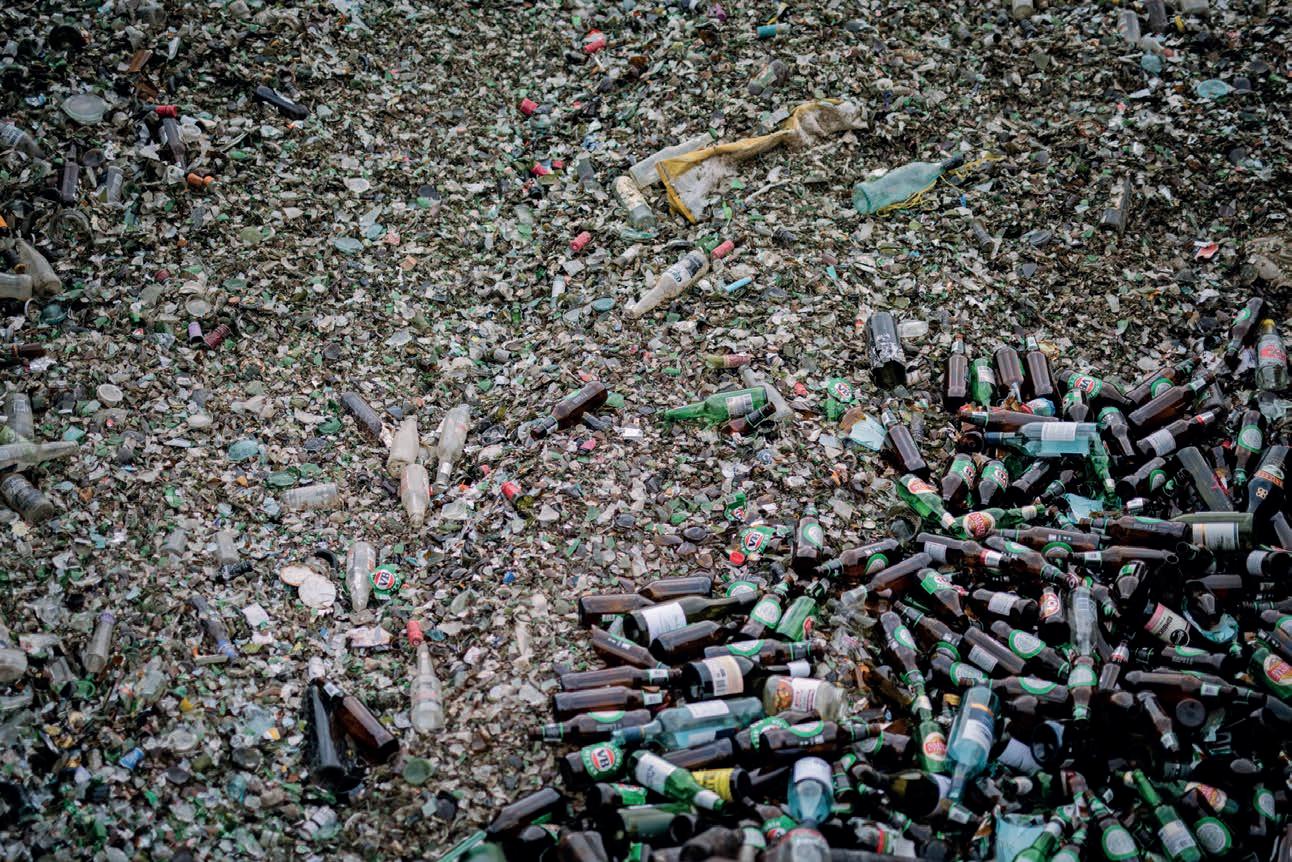
Darren says all aspects of the business require excavators or front-end loaders. The EC220D is interchangeable with everything from a coupler to a bucket and hydraulic
breaker, making the switch between working with timber and green waste to scrap metal or concrete almost effortless.
He says the EC220D is smooth to operate, comfortable and the long carriage adds stability – a plus when they can be in operation for up to 40 hours a week.
Superior visibility from the cab and conveniently placed navigational
controls means operators experience less fatigue.
“The operators are so happy with them,” Darren says. “I’ve got one operator who is in them all day every day who swears by the EC220D.”
But the biggest selling point that got Darren over the line when purchasing a second excavator in 2021 was the fuel efficiency. He’s
54 / WMR / October 2022 WASTE MANAGEMENT IN ACTION – EXCAVATORS
Western Waste Management handles residential, commercial and construction and demolition waste projects.
The EC220D is the next generation of fuel efficiency.
saving about 13 per cent on fuel costs compared to his previous equipment.
substantial savings,” he says.
Noel Fernando, CJD Equipment Victorian Regional Sales Manager, says the EC220D is the next generation of fuel efficiency.
He says Volvo’s ECO mode, a new hydraulic system and a D6 diesel engine combine to reduce operational costs which maximises fuel efficiency.
“Volvo’s unique ECO mode contributes to up to five per cent of the machine’s total improved fuel efficiency without any loss of performance in most operating conditions,” he says.
“The design features electronic pump control technology which reduces flow and pressure losses while maintaining digging power and maximising swing torque.”
The D6 diesel engine is integrated with all excavator systems and is available in two versions to comply with regional emission regulations.
Noel says the optional auto engine shutdown function automatically turns the engine off to reduce fuel
The operator is informed one minute before this occurs.
The I-ECU also measures instantaneous fuel consumption while average fuel consumption is displayed numerically per hour, allowing operators to monitor fuel usage on different job sites and applications.
Volvo’s integrated work mode system now includes the G4 mode, which also allows for optimum fuel efficiency and machine performance. Operators can choose the best work mode to suit the task at hand –selecting from I (Idle), F (Fine), G (General), H (Heavy) and P (Power max) mode.
While the EC220D is designed for top performance, if there are any issues it features user-friendly service access to centralised filters and grouped greasing points.
The radiator, charged air cooler and hydraulic oil cooler are situated side-by-side on a single layer to reduce blockages and aid cleaning. The system is accessed for
distribution box, also accessed from ground level, contains all fuses and relays which are identified on a map inside the box cover.
Noel says CJD Equipment also has a wide service network of technicians, workshops, and dealers throughout Australia to assist with any problems that may arise, as well as fully equipped parts warehouses in every capital city.
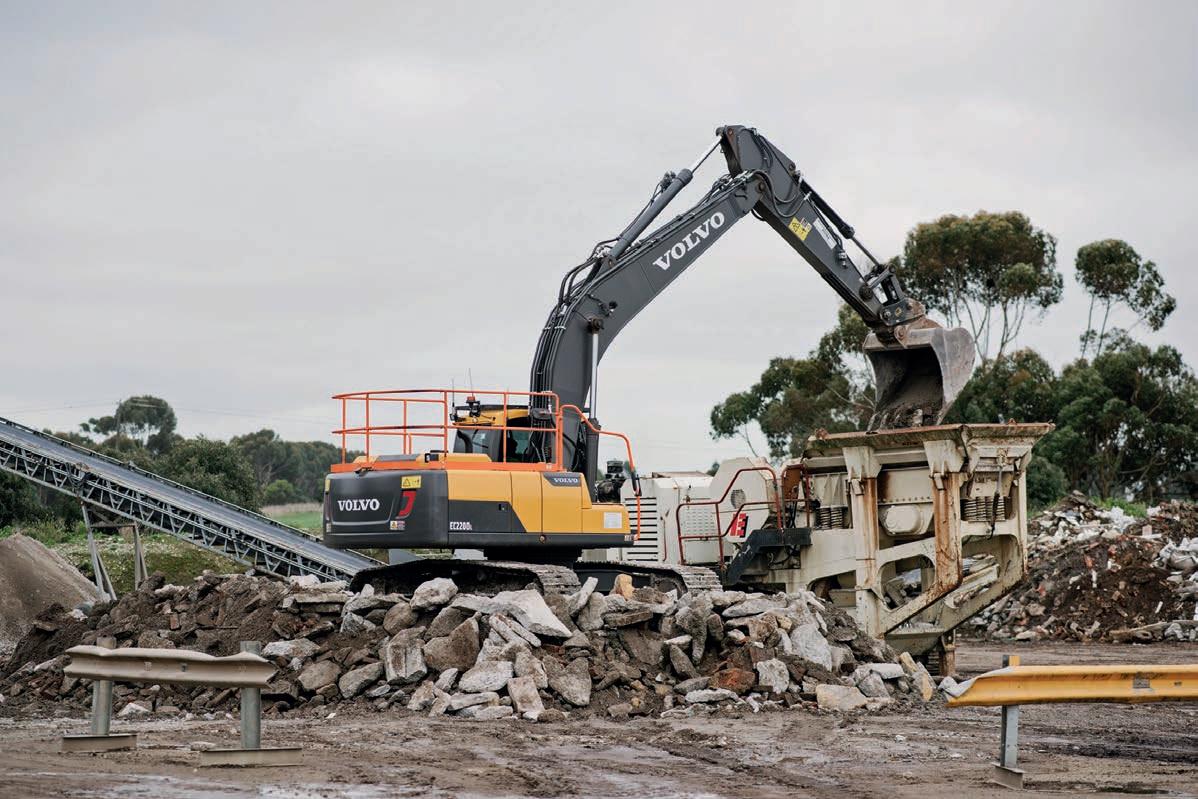
Darren says CJD, and Volvo’s backup service is a plus.
“We just couldn’t get back-up previously, but CJD is on top of that, and its salespeople are great,” he says.
“Back-up service and a supply of spare parts was a big issue for us prior to dealing with CJD. So far, they haven’t let me down.
“In this COVID-19 world everything seems to have slowed down, but CJD has spare parts on hand.”
For more information, visit: www.cjd.com.au
www.wastemanagementreview.com.au / WMR / 55
The EC220D is interchangeable with a variety of attachments including a coupler, bucket and hydraulic breaker.
Getting it done
DIVERSIFICATION IS A FUNDAMENTAL ELEMENT AS THE RECYCAL GROUP LOOKS TO MAKE AN IMPACT ON PROTECTING THE ENVIRONMENT AND CONTRIBUTING TO A CIRCULAR ECONOMY.
Recycle, recover and reuse are terms entrenched across specialist recyclers, the Recycal Group.
For the group’s sister companies, Ecocycle, EcoBatt, Castings Tasmania and ACL Metal Powders, the three ‘Rs’ have become a key catchphrase as they work to lead the charge towards decarbonisation in the metal recycling sector.

Reflecting on the inroads made during the past two years, Doug Rowe, Director of Ecocycle, says he’s proud of the progress. Despite the challenges dealt by the COVID-19 pandemic, he says the four businesses are working well together.
Recycal, a processor of scrap metal arisings, is a company focused on service with a clear direction
of where it needs to be, according to Doug.
The bright green, company-owned recycling trucks are a familiar sight, with Recycal facilities in every Australian state. A range of hookon bins and smaller green bins are available for clients, as well as crane trucks, tailgate trucks, tautliners, and semi-trailers. The company has Environment Protection Authority and Dangerous Goods (DG) licences, and all drivers are DG licensed.
Doug says Recycal value-adds selected materials to processed scrap metal to ensure a quality feed for its sister companies and preferred end users overseas.
Ecocycle started recycling and recovering silver from film and has
since included mercury recycling into the mix. X-rays, waste dental amalgam, all lighting waste, mercury button cell batteries, and mercury waste from the oil and gas industries are recovered and where possible, recycled.
“Ecocycle has EcoBatt and Eco EWaste operating alongside it, perfect fits for the group and our businesses,” says Doug. “EcoBatt is progressing well with its collection, sorting and processing of batteries around the country, as well as working with electric vehicle and storage battery cells.
“We are using some of the recovered lithium cells for a second life in battery storage, and we are currently building 12, 40-foot containers to supply green power for our operations from solar panels installed on our facilities.”
56 / WMR / October 2022 WASTE MANAGEMENT IN ACTION – E-WASTE
Castings Tasmania melts collected steel to make castings for the Australian market.
He says Eco EWaste is just moving into the recycling arena and will ensure the company has the solid foundation needed to succeed in e-waste recycling and recovery.

Doug says he’s surprised by the pricing levels given to the industry and feels the rewards for recycling are not quite balanced.
Given the importance of recycling e-waste and keeping it out of landfill, he suggests better returns would avoid stockpiling and the unprofitable operations of the past and instead encourage investment in the industry to bring in new, efficient processing equipment to tackle the growing e-waste problem.
Castings Tasmania is a large foundry

by the Recycal Group and then processes it to size to make castings for the Australian market.

Doug says that using recycled metal, as well as green solar storage power, is an environmentally friendly way to keep Australian metal onshore for domestic use.
“The expense and the fossil fuels used to ship castings in, and ship metal out, makes no sense when we can do all that here locally,” he says.
“We sort and separate, and the shredder in Launceston prepares the right size for a dense feed for the furnace. The steel we can recover from alkaline batteries is a good source of feed for the foundry, as is the manganese we need for the hardness in
ACL Metal Powders is a bespoke non-ferrous foundry that makes copper alloy powders for the world markets.
Any pure copper collected is melted, while the copper granules from cables is granulated and separated.
“We alloy this with lead and tin to make a pure blown fine powder,” Doug says. “Copper cables that Recycal collect and process from both our internal companies and external clients are a prime feed for the ACL Metal Powders plant.”
Doug says that while a lot of copper materials are exported to Third World countries, Recycal is using about 60 tonne per month of copper. Quality, pure recycled copper granules are a critical feed stock for the company.
“By recycling and recovering metals, with a focus on selecting the material that fits the group, we can make a real impact on looking after our environment and promoting that circular economy,” Doug says.
“We’re protecting our environment and making great use of what we have locally to make a difference.”
For more information, visit: www.ecocycle.com.au
www.wastemanagementreview.com.au / WMR / 57
A shredder in action at Ecocycle’s Ringwood facility.
Recycal’s bright green collection bins are a familiar sight across Australia.
Castings Tasmania.
Dismantling the e-waste puzzle
For many Australians, e-waste remains something of an enigma. With multiple states introducing landfill bans for electronic waste in recent years, disposing of unwanted devices seems to get more difficult with each new tech purchase.
Alex Samsudin started Green Technology Recycling (GTR) ACT in December 2020 to provide a responsible e-waste recycling solution for councils and small businesses.
As a complementary operation to the New South Wales-based branch of the same name, GTR ACT focuses on dismantling electronic waste items and distributing the various parts for processing and recycling.
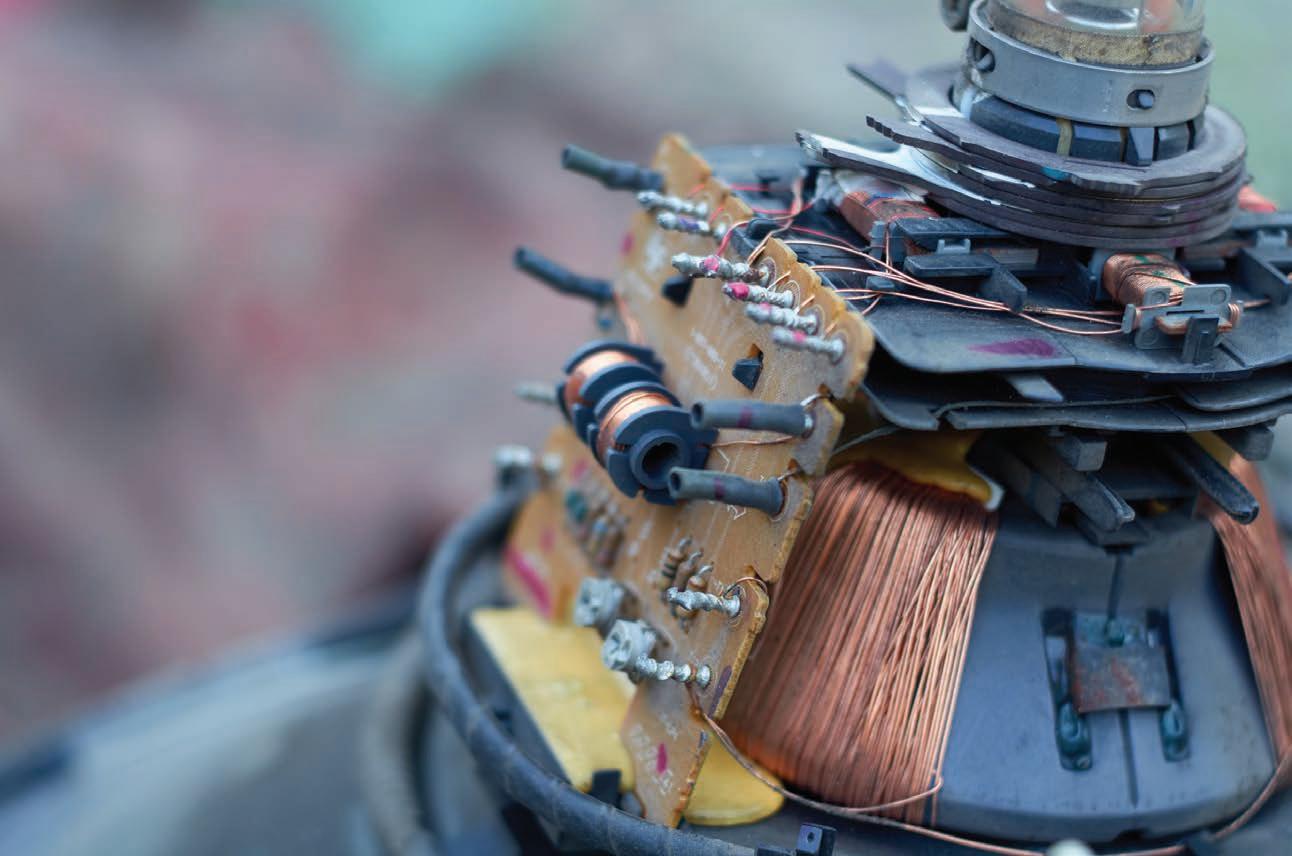
“I’ve worked with electronic waste for about 10 years – close to seven of those with my partner at the New South Wales site,” Alex says. “I don’t see myself an expert though. E-waste is always changing, so you’re still learning every single day.”
Alex’s resource recovery journey began by chance while studying software engineering at the Australian National University in Canberra.
“As a university student in 2009, I needed some form of income,” he says.
“I had a couple of friends who were working dismantling e-waste, so I got into it that way.”
STREAMLINING E-WASTE
Alex says his business, along with its NSW counterpart, has developed an edge by fostering relationships individually with what he calls ‘downstream vendors’, cutting out the middle person.
He says the business is also the only approved recycler for cathode-ray tube (CRT) screens in the ACT. Once dismantled, GTR sends the CRT glass to Nyrstar in Port Pirie, South Australia, where the glass is refined.

“We have a really good relationship with Nyrstar,” Alex says. “For our circuit boards and computer parts, we deal directly with major specialised refiners in Japan and South Korea.”
Alex says GTR is yet to come across an authorised operation for refining circuit boards and computer parts responsibly in Australia.
“We are always on the lookout but so far, our international partners are the only refiners that can
meet our strict auditing standards,” he says.
While these direct relationships make better economic sense for GTR, Alex says doing business this way also requires that he manually tracks where material is going to ensure it is being recycled properly.
With the increasing scrutiny over where Australia’s e-waste ends up, this is something Alex and GTR takes seriously. It is also where Alex’s software engineering background has come in handy.
“Where the product is going, those companies are heavily audited by us to ensure compliance with national and
GREEN TECHNOLOGY RECYCLING IS A SPECIALISED TECHNOLOGY RECYCLER. ALEX SAMSUDIN, DIRECTOR OF THE ACT BRANCH, DISCUSSES THE BUSINESS AND AUSTRALIA’S EVER-GROWING E-WASTE CHALLENGES.
58 / WMR / October 2022
Alex Samsudin, Director, Green Technology Recycling (ACT).
GTR partners with specialised refiners, such as Nyrstar for CRT glass.
WASTE MANAGEMENT IN ACTION – E-WASTE
international requirements,” he says. “We are also building our own waste management system to record our own data – what we receive and what we send out. We do it all in-house.”
Alex says another key part of GTR’s operations, and an important part of e-waste recycling overall, is maintaining data security.
“All data, regardless of the form, must be destroyed,” he says. “We take great care to ensure that all necessary data destruction occurs in our facility before anything is shipped out.”
THE COST CONUNDRUM
Alex says one of the biggest challenges his business faces is the misguided notion that all electronic waste recycling can be done for free.
“Not everything can be done for free. There is a cost in doing things the right way, and that cost must sometimes be shared with our customer,” he says.
“People’s perception is that everything can be recycled, which is mostly true, but for some materials there’s a much higher cost involved.
“Inflation, fuel prices, transport costs, supply chain issues – these factors we can’t control all take a toll on small businesses like ours.”
It also helps to keep diversifying operations and pursue new e-waste streams. Alex says GTR ACT is applying for further accreditations, such as the globally recognised R2 certification, which will enable the business to service government departments.

Another way GTR ACT differentiates its operations is how it sources its staff – something Alex considers of critical importance.
He says the nature of much of the dismantling work is such that it can be easily broken down into simple stages and allows him to employ staff with learning disabilities or other barriers to entering the workforce.
“Partnering with Workways Australia, we solely focus on employing local residents of the ACT who might otherwise struggle to find work,” Alex says. “It’s a partnership that’s worked well for more than seven years.”

NOT ALL E-WASTE IS BORN EQUAL
Alex says while public knowledge around recycling electronic waste is improving, there is work to be done.
He says what is typically considered ‘e-waste’ is both too broad and regularly misunderstood.
Batteries and toner cartridges are regularly lumped in with e-waste, but the process for recycling them is altogether different. To ensure they are kept from landfill GTR passes batteries and ink toner on to specialised recyclers such as B-Cycle and Close the Loop. Alex says this can come at a cost to the business, but it’s a price they’re prepared to pay to do things properly.
Modern television panels are also an issue. Alex says there aren’t many recyclers in Australia that specialise in recycling them, which can mean a bottleneck for programs such as the National Television and Computer Recycling Scheme (NTCRS). Like with CRT glass, hazardous content and a high degree of complexity means recycling them properly can be costly.
“Different companies manufacture television panels differently, there’s no standardised process,” Alex says. “They all use different glue, different silicone and different casings. Dismantling them is a very labour-intensive process.”
The recycling of end-of-life solar panels is also becoming a hot-button topic, especially as Australians push for more sustainable power alternatives. Alex says recycling solar panels presents many of the same challenges as modern television panels.
“Like with batteries and television panels, solar panels should not really be considered e-waste,” he says. “They are in a very different category. There’s an overlap, but that overlap is very, very small.”
Alex says this is something that Australia needs to address urgently.
“Everybody’s trying to do the right thing by the environment – installing new solar panels or upgrading old ones,” he says. “But better education and recycling solutions are going to be needed going forward.”
For more information, visit: www.greentechnologyrecycling.com.au
www.wastemanagementreview.com.au / WMR / 59
Data security is a critically important element of e-waste recycling.
Modern science
TWO CHEMICAL ENGINEERS AND A DOCTORATE IN CHEMISTRY ARE IN THEIR ELEMENT AT GLOBAL RESOURCE RECOVERY AS THEY DISCOVER NEW WAYS TO CLOSE THE LOOP ON INDUSTRIAL WASTE.

There’s been a gender gap throughout the years at all levels of science, technology, engineering and mathematics (STEM) disciplines all over the world, according to the United Nations.
Even though women have made progress towards increasing their participation in higher education, they are still under-represented in these fields.
But Global Resource Recovery (GRR), part of Cleanway Group, is playing its role in tipping the scales.
Chemical engineers Virnushee Balendran and Amy Cao, and Chemist Doctorate Ramneet Kaur are leading the charge as the company invests in cutting-edge research to treat industrial waste.
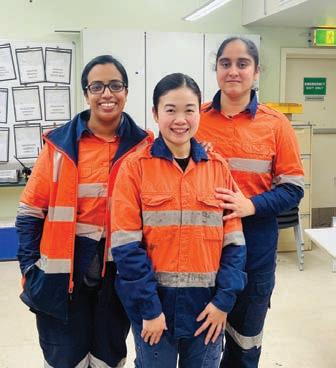

“It’s very hard to stay with science,” says George Hatzimihalis, GRR
Chief Technical Officer. “Virnushee, Ramneet and Amy have not only stuck with it but made it their own. They’re great mentors for other women.”
Virnushee, GRR Operations Manager, was one of only two women in a class of 30 studying a Bachelor of Chemical Engineering and a Bachelor of Pharmaceutical Science at Monash University.
While a majority of her class moved into data analogy after graduating, Virnushee was keen to put science into practice. Within five and a half years she’s progressed from the laboratory at GRR to running the plant.
She says she’s driven by GRR’s commitment to research and development to close the loop on waste and find a potential source of reusable products.
“We have certain recipes to look for contaminants in waste and treat them,” she says. “But we’re always looking at what we can do to develop those processes to improve our efficiencies.
“We want to be able to provide our clients with a full waste management solution. We try not to send any of our waste to landfill.”
Virnushee says GRR is licenced to manage a range of chemical and hazardous wastes for mining, manufacturing and infrastructure companies. It’s part of her role to look at new ways to process and treat different waste streams.
George says it’s about unlocking the raw materials and giving them another useful life that’s economically and
commercially viable. He references GRR’s success in black oil and glycol recycling as to why research and development remains key.
“We’ve driven change in terms of regulation, waste minimisation and cleaner production,” he says. “Glycol recycling, transforming coolants and other glycol-based waste into a purified product that can be reused, was not economical when we started. Now it is.
“I believe every problem has an opportunity and a solution. Virnushee, Ramneet and Amy have taken that on and provided their knowledge and new ideas.
“I’m very proud they’ve taken the baton and made it better.”
For Dr Ramneet, making things better is a key reason she’s remained with GRR.
The Production and Laboratory Manager admits she initially took the job when she’d finished university because it was a great opportunity to
60 / WMR / October 2022 WASTE MANAGEMENT IN ACTION – WOMEN IN INDUSTRY
Amy Cao, lab and production chemist.
Virnushee Balendran, Amy Cao and Dr Ramneet Kaur.
Virnushee Balendran, GRR Operations Manager.
build on her skills learned in India. Shortly after she started, GRR was involved in the clean-up of a factory fire at an industrial site that spewed toxic smoke across much of Melbourne and a large oil spill.
“More than 75 per cent of the water from those incidents was treated here, at GRR,” Ramneet says. “That’s when
should all be focusing on. It’s a chance to give back to the community and look after our future.

“Treatment and sustainability are our main goals. We aim to recycle a majority of the waste that comes on our site.”
With a Bachelor of Science, Master of Science in Chemistry, Master of Philosophy and PhD in Organic Chemistry from Jammu University in India, Ramneet brings more technical experience to GRR to help with resource recovery.

Amy, a chemical engineer, agrees that being able to contribute to improving a community and environment is a big motivator.
She completed an internship at GRR while studying a Bachelor of Chemical Engineering and a
and was later offered a full-time position as a laboratory and production chemist.
In the lab she tests and samples different waste types, among other jobs, but is also involved in the research and development of new processes and products.
“It’s amazing how science, and chemistry, can help with sustainability and recovery.
“It’s motivating to know that I can contribute my skills and knowledge to do something that will make a difference.”
“We’re working on innovative methods to recycle industrial waste that in five-to-ten years could be the next big thing,” Virnushee adds.



For more information, visit:
Your partners in waste

Visit cjd.com.au for more information or call 1300 139 804
Packing a punch
PACKER 2.0.
STG Global is known for innovation. From its first water truck 30 years ago – a combination of ingenuity and grit – to its modern fleet, the Australian manufacturer isn’t afraid to change things up.


The focus has always been on providing waste trucks built for Australian conditions, says Ross Yendle, Managing Director of STG Global.
“Every Australian street and suburb has its unique challenges. You need a truck that makes garbage collection effortless and efficient,” Ross says.
“We set out to manufacture worldclass, durable truck bodies that can handle the challenge of Australian city, suburban and rural streets.”
There’s no better promotor of the trucks than the people who drive them. Which is why, when customers suggest there’s
room for improvement, STG Global listens.
The STG Bandit Side Loader is a truck particularly suited for getting rid of waste. Ross says driver feedback was the catalyst for the design of the automated loader.
“The Bandit is easy to manoeuvre thanks to optimised wheel bases. It’s also a leader in its approach to weight-loading which ensures that pick-ups are fast, safe and compliant,” Ross says.
“Our design team repositioned The Bandit’s centre of gravity towards the rear of the vehicle to reduce front axle loading and meet all legal requirements. It features a slim profile, thanks to a compact refuse chamber and slim tailgate, and is equipped with a water-tight tailgate seal and dual body tipping cylinders.”
The Bandit has been described as the waste truck built for the future,
thanks in part to the pendulum packer. STG Global now has exclusive rights to the new and improved pendulum packer, the Pendulum Packer 2.0, across Australia and New Zealand.
The Pendulum Packer 2.0 works with gravity, allowing fast compaction without requiring heavy force. It’s supported by a single hinged ‘arm’ on each side, powered by a single hydraulic cylinder that is accessible from the outside for ease of maintenance.
Ross says the new design is proven to have minimal jams and does not place pressure on the side wear plates, which have been known to wear off. It also has a higher compaction density.
“We’ve taken a much-used truck in the market and upgraded it,” he says. “The fleet is ticking boxes in terms of customer needs.”
STG Global has exclusive rights to the Pendulum Packer 2.0, as used in The Bandit.
STG GLOBAL INTRODUCES THE PENDULUM
62 / WMR / October 2022 WASTE MANAGEMENT IN ACTION – WASTE COLLECTION & TRANSPORTATION
Also ticking boxes is STG Global’s Tusks front loader. A mix of strength, long-lasting materials and intelligent automation have made the Tusks a firm favourite in the waste sector.

The Tusks body and rear door are made from Hardox, a steel used for high wear applications. The floor of the body is made from Hardox HiAce, a corrosion-resistant steel plate designed for the waste industry to extend the service life of the truck.
Ross says the bin pick-up system is powerful and easy to use.
“With one touch, the Tusks lifts and tips the bin before the triple butterfly door closes securely, trapping the waste, in a 12-second lift cycle.”
The integrated control system features all-in-one single display, splitscreen capability for a second app to run in parallel on the same screen,
built-in electronic driver checklists, on-screen incident capture buttons, built-in GPS for route navigation and day/night mode to alleviate operator eye strain and in-cabin distraction. Third-party external software can also be integrated.
Ross says data is crucial for all operations and offers opportunities to boost efficiencies. Tusks incorporate the LOADRITE E2750 bin weighing system directly into the iPad. The system automatically measures the net weight of the bin ensuring the truck is not overloaded.

The Bandit and the Tusks are two mainstays of STG Global’s fleet that has, until now, been focused on bigger trucks that carry a heavier load. However, a five-year partnership signed earlier this year with North American truck company New Way,
will introduce a breadth of products never seen in Australia.
Ross says the partnership brings a new line of mini bodies to Australia to complement STG Global’s range.
It will include the ROTO PAC, an auger-driven dual-stream truck, as well as a New Way Diamondback mini rear loader, VIPER rear load and MAMBA mini side loader.
“We’ll have a full range of side, rear and front loaders from mini through to large,” Ross says.
STG Global’s Tusks and Bandit, along with the New Way trucks, will feature at Waste Expo 2022 at the Melbourne Convention and Exhibition Centre from 26-27 October.
more information, visit: www.stgglobal.net
OFS SIDE BAR
For
FILTER PRESS • Low operating costs and high safety and quality standards • Robust design with maximum automation for filtration pressure from 6 to 30 bar • Chamber or membrane filter plate technology with automated cake discharge • Filter cloth cleaning with pressure up to 100 bar for continuous throughput requirements • Guaranteed best filtration results SALES | HIRE | SERVICE | PARTS 1800 182 888 | www.lincom.com.au | sales@lincom.com.au | OFFICE LOCATIONS | QLD | N QLD | HUNTER REGION | NSW | VIC | WA | NZ TRUSTED RELIABILITY. CONTINUED SUPPORT. We bring the world’s best Dewatering equipment to you.
Meyer joins Genox
HAS BOOSTED ITS RECYCLING RANGE WITH EQUIPMENT FOR ALL BUDGETS AND APPLICATIONS.
Since the brand’s entry into the Australian market Genox has made a big impression. Today more than 300 companies in Australia have Genox equipment installed, making it one of Australia’s leading manufacturers of recycling machinery.
Genox’s range of shredders and granulators are ideal for companies looking to achieve zero landfill or actively contribute to the circular economy. Since its introduction, the brand has been distributed and supported exclusively by Applied Machinery.
Genox offers a diverse range of shredders to process different waste streams down to specific sizes, including plastic shredders, wood shredders, e-waste shredders, and those for non-ferrous material.
Each shredder series comes with features to achieve the best cutting effect and size to suit various applications.


A new model has now been added to complement the existing models. The BH ‘Behemoth’ Series Single Shaft Shredders are heavy duty, reduction machines designed for shredding a wide variety of untreated waste material streams into either coarse or medium-sized fractions. The powerful, wear-resistant machine structure is well suited to demanding recycling tasks.
All BH series models feature a forcefeeding ram, a high-performance rotor classifier screen and hydraulic power unit. Six models are available to cater to a multitude of applications.
Peter Koueik, Applied Machinery’s Recycling Division Sales Manager, says the BH series complements existing Genox Vision, Xeno and Mino series’ of shredders, and the Gran-Calibur series granulators which offer defined size reduction of various materials in a single pass.
“Waste reduction and the associated recycling has become a crucial part of the Australian landscape over the past three to five years especially and plays a key role in minimising landfill and driving growth in the number of new products manufactured with recycled material,” Peter says.
“Genox’s range of shredders and granulators are perfect for reprocessing waste material for direct input into closed loop manufacturing, secondary
processing or simple volumetric savings in recycling skip bins.
“While many customers are aware of our larger-scale recycling plants, our extensive range of shredders and granulators cater to just about every type of business, all budgets and practically all recycling applications.”

Peter says Genox machines are affordable, and are usually available in stock or on quick lead times, so customers can start reaping the benefits quickly.
In addition to the new BH Series, Applied Machinery has recently taken on the distribution of the Meyer brand of recycling equipment.
Meyer is a world leader in PET recycling and colour sorting. The CG.P model uses visible light, infrared light
APPLIED MACHINERY
64 / WMR / October 2022 WASTE MANAGEMENT IN ACTION – MACHINERY
The Meyer CG.P series is a leader in PET recycling and colour sorting.
and UV light to sort PET bottles and bottle scrap – specifically in relation to colour sorting and purity classification. The stepless dimming system can remove impurities such as discolouring,
ageing, as well as fluorescent and aluminium flakes.
The CG.P series can also be used for flake colour sorting in household appliances, storage batteries, PVC,
CUSTOMERS WITHOUT DISCOUNTING
HDPE, WEEE and other materials. The machine can process from three to eight tonnes per hour and is easy to learn and simple to operate.
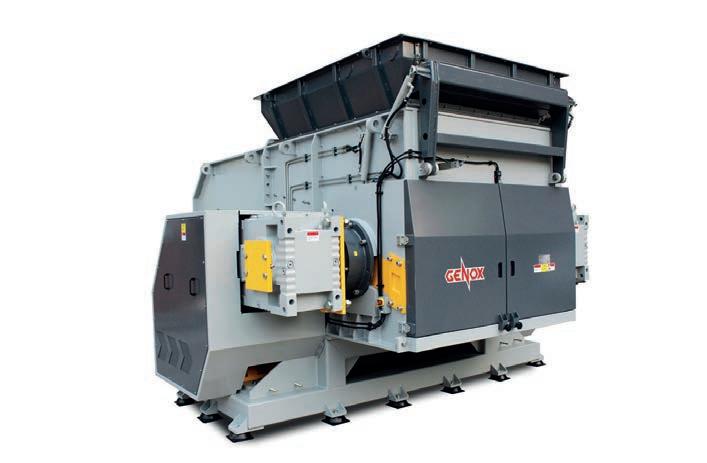
“The expansion of the Genox range, plus the introduction of the new Meyer brand, will ensure we continue to be a leader in recycling technology and empower both large and small companies to reduce landfill and contribute to the circular economy,” Peter says. “One of the Applied Machinery advantages is that we have specialist service engineers who install the machinery and, most crucially, train our customers and their staff to use it efficiently and safely. We then provide regular servicing and follow-up.”
For more information, visit: www.appliedmachinery.com.au or www.genoxmachinery.com.au
With Loadrite refuse truck scale waste ESG data reporting
Environmental, Social and Governance (ESG) reporting is growing in Australia and New Zealand. Major supermarket chains have embedded it into their investor and customer relations. But it is very difficult for waste producers to measure waste.
Waste production data collected on your Loadrite refuse truck scales presents an opportunity to use it as a non-discounting point-of-difference for both existing and new customers.

Loadrite scales collect waste data that:

Is accurate
Is collected automatically (no interaction from the driver required)
Empowers producers to take actions
dealer
www.wastemanagementreview.com.au / WMR / 65 The BH “Behemoth” Series Single Shaft Shredders are heavy duty, reduction machines. Loadrite
©2022 Loadrite Ltd. PN TC-002 (05/22) Ready 02:12 PM 3860 17670 kg (Payload) kg (Truck Total) SECURE
►
►
►
Bin Evolution
A SOLUTION FOR MANAGING PUBLIC LITTER BINS HAS LANDED THE CITY OF KINGSTON THE TOP GONG FOR CUSTOMER EXPERIENCE AT THE MUNICIPAL ASSOCIATION OF VICTORIA TECHNOLOGY AWARDS.
The Bin Evolution project involved the development and roll out of a new labelling system for more than 1000 public bins within the City of Kingston.
The bins were fitted with unique QR codes that can be scanned by residents and visitors to let the council know if one needs emptying or fixing. The notification goes to the city’s waste contractors for action.
Samantha Krull, City of Kingston General Manager of Infrastructure and Open Space, says the need for the Bin Evolution came on the back of the extended COVID-19 lockdown in 2020 and council’s desire to keep open spaces tidy and the community informed, safe, and active.
“During COVID lockdowns we saw an unprecedented use of open spaces, particularly the foreshore, when residents could only move within their five-kilometre radius,” Samantha says.
“With well over 1000 bins across our foreshore, reserves and shopping villages, our bins were overflowing, and our collection program wasn’t keeping up with the heightened demand.”
Tim Scott, Team Leader, Maintenance Contracts and Waste at the City of Kingston, says additional bins were installed and waste runs were increased during the summer period, but the measures still failed to keep up with the amount of waste generated.
He says the challenge was heightened because most of the waste was generated at weekends when the city was unable to respond.
Samantha says a cross-organisation team took a deep dive into the issue, with the humble QR code identified as a key part of the answer.
A unique QR code was generated for every individual bin and printed onto stickers with a message encouraging the public to report issues.

With no more than a smartphone and a passion for keeping Kingston beautiful, customers can scan the QR code and submit the form, the waste contractor is notified directly, and the bin is emptied, with council notified once the task has been completed.
“QR codes were everywhere during Covid,” Samantha says. “Everyone’s phone could use them, and everyone was comfortable with them.
“These QR codes, coupled with a full automation of the reporting process, has produced fantastic results. Because the contractor is alerted straight away, they can immediately get to the hot spots.”

Tim says regular reports show that more than 95 per cent of people reporting an issue with a bin have used the QR code rather than traditional methods since the project was started.
It’s not just the community that has embraced the evolution. Samantha says councillors felt empowered by the project, too.
“They felt there was going to be a resolution,” she says. “They felt that they could do something about a problem.”
The Kingston City Council redeployed staff whose roles were impacted by Covid to gather information for the database to be used for the bin project.
Tim says the council is now looking at ways to introduce a similar QR code project for other assets it manages such as public showers and taps.
“We always want to have a good standard of amenity in public spaces for people to recreate and enjoy their weekend,” he says. “We’re looking at how we can use the Bin Evolution as a
66 / WMR / October 2022 COUNCIL IN FOCUS
The QR code labelling system sends a message direct to the council’s waste contractor for action.
prototype for other things. It changes our relationship with the customer and the community.”
Samantha is proud of the council team for taking a small idea for a problem and
TYRE TURNKEY RECYCLING

More
With a solution from ELDAN, your recycling will be versatile and customized to your needs.

The modular design enables you to expand or upgrade your plant as the market changes.
From chip production to granulate, from granulate to powder.
You also get a guaranteed capacity and output purity.
Meet Carsten Nielsen at Waste EXPO Australia 26-27 October 2022.
turning it into something that has had a huge impact.
Kingston City Council won the customer experience award at the Municipal Association of Victoria
(MAV) Technology’s Awards in August. MAV President Cr David Clark says it’s important to shine a spotlight on the councils leading the way in the use of technology.
“Technology moves forward so quickly, so it’s important to stop and celebrate those leaps forward at a local government level. Our technology people often work behind the scenes, however the work they deliver is at the forefront of our positive interactions with our communities.”
Kingston City Council and Bin Evolution have also been nominated for the Linked Organisations of Local Authority Achievement of the Year award, which includes organisations from Australia, Belgium, Canada, Netherlands, USA, UK and Sweden. The 2022 LOLA conference is being held in New Zealand in November.

SOLUTIONS BOOTH: B-100 Come and meet us at our stand to discuss your recycling requirements WWW.ELDAN-RECYC LING.COM
than 95 per cent of people reporting an issue with a bin have used the QR code rather than traditional methods since the project began.
Industry in good hands
AUSTRALIA’S WASTE INNOVATION AND RECYCLING AWARDS SHINE A LIGHT ON THE PEOPLE AND BUSINESSES CREATING NEW WAYS TO TACKLE WASTE AND RESOURCE RECOVERY.
“W
hen we identify and celebrate the young high achievers in our industry, we change what leadership looks like, and open the door to a more diverse, inclusive industry.”
Lisa McCutchion, REMONDIS General Manager – Brand and Marketing, says that’s a powerful motivator for REMONDIS to sponsor
the Young Professional of the Year award at this year’s coveted Waste Innovation and Recycling Awards.

“One only has to look at the line-up of finalists and winners in the Young Professional Award, to get an insight into the future of leadership in the waste industry,” Lisa says.

“Last year’s winner, Tara Osborne from BINGO, is a standout performer whose success creates opportunities for others.
“When we celebrate excellence in our industry, we create opportunities for more of the same, and better. So, I’m a fan of awards programs because they galvanise action around high performance.”
REMONDIS was a big winner at last year’s awards, winning the Outstanding WARR Projects Metro for its Western Australia Container Deposit Scheme and the Operational Excellence Award. Susie McBurney, REMONDIS General Manager NSW/ACT was named the Woman of Waste.
Lisa says that for many years REMONDIS has been getting the job done for its customers. Despite its global scale, the company is a modest private company, a reflection of being family-owned and family-run.
“We hadn’t been in the habit of celebrating our wins, but we made a conscious decision to change that
Award Categories
Outstanding WARR Project: Metro –sponsored by Veolia
Outstanding WARR Project: Regional – sponsored by Tyre Stewardship Australia
Operational Excellence – sponsored by TOMRA Collection Solutions
Innovation Award – sponsored by ResourceCo
Outstanding Facility Award
Young Professional of the Year –sponsored by REMONDIS Australia Woman of Waste – sponsored by Re.Group
Community Engagement Success of the Year – sponsored by Visy
WARR Workplace of the Year Leader of the Year
last year because our people really deserved recognition for several years of absolutely standout performances,” Lisa says.
“In short, we had a lot to be proud of and the Waste Innovation and Recycling Awards gave us an excuse to talk about it. In collating information for last year’s submissions, we created an opportunity to share and celebrate our wins – firstly, within the company to our 1100 employees, and then beyond it.
“Winning a national award is magic. It’s a powerful moment of recognition
68 / WMR / October 2022 EVENTS
2021 Young Professional award winner, Tara Osborne.
for the team or person involved and can be operationally galvanising – helping to build a business case for future innovation or to scale an award-winning practice.”

Lisa says what gets rewarded gets repeated but in a busy operation it’s easy to get distracted from the ‘reward’ side.
She says while putting together evidence to support an award nomination requires some effort, seeing people being celebrated as finalists and acclaimed as winners is worth every effort, and helps to build a richer picture of the waste and recycling industry.


“When Susie McBurney won Woman of Waste last year, we already knew she was fabulous,” Lisa says. “But now the wider industry knows it too, and we can
take pride in sharing this accolade with our customers. When our ACT team won the Operational Excellence Award that was welldeserved, long-awaited recognition for a tightly run operation, which could otherwise have slipped below the radar.”
New projects, technology and people have continued to drive innovation within the industry in the past 12 months.

This year’s awards will be an opportunity to acknowledge the successes and the leaders behind them.
Winners of the 2022 awards will be announced at a gala awards night in Melbourne on 26 October.
For more information, visit: www.wasteawards.com.au
REMONDIS’ Susie McBurney collects one of several awards at the 2021 awards night.
JCB WHEEL LOADERS 1300 522 232 jcbcea.com.au PROVEN RELIABLE AND PRODUCTIVE The JCB range of wheel loaders are built to be strong, reliable and provide comfort for long days in the cab. Designed for ultimate productivity, and offering superb performance the JCB wheel loader range features best-in-class comfort, visibility, safety ergonomics and superior serviceability plus a whole lot more.
Roadmap to a sustainable future
MATT GENEVER,
CEO
When it comes to waste production, Australia is among the top developed countries in the world to contribute –responsible for more than 76 million tonnes of waste annually – and rising.
As Australia’s waste crisis continues to escalate, legislation, funding and implementation of policies are helping to shift the dial and provide a framework that outlines ways to improve infrastructure, increase recycling rates, tackle food and organic waste, and support reduction, recycling, and reuse.
At a crucial turning point for the industry, Waste Expo Australia returns to Melbourne on 26 and 27 October, delivering insight into the latest developments in managing waste and recycling, and covering the issues impacting the waste and recycling sector.

Matt Genever, Sustainability Victoria Interim Chief Executive Officer and keynote speaker at this year’s expo, says there’s been a buy-in across the board in Victoria to accelerate the move to a circular economy.
VICTORIA, WILL SHARE
“Victoria has come a long way in the past few years in terms of developing strong partnerships with industry,” Matt says. “Both the government and the waste sector are aligned and working on the same page toward infrastructure projects and market development.”
He says a key part of the chain has been more engagement both within the manufacturing sector and the community.
While Australia has typically been good at managing the recycling end of the waste hierarchy, Matt says
INTERIM
OF SUSTAINABILITY
THE STATE’S SUCCESS IN DRIVING CHANGE AT WASTE EXPO 2022.
70 / WMR / October 2022 EVENTS
Waste Expo Australia returns to Melbourne this month.
the ease of exporting waste over many years meant less was done to build strong links between recycling and manufacturing.
In the past, a move toward using recycled products in manufacturing received a poor reception, partly because of the quality of the product and Australia’s capacity to maintain supply.
“A strong recycling system has to be at the core of a circular economy but we absolutely need businesses that can transform waste when it comes to its end of life and domestically turn it into something of high value for reuse,” Matt says.
“At the moment we’re seeing manufacturing businesses are really tapped into the recycling sector in terms of using recycled commodity.
“A broad package of support and funding for projects and activity to develop a circular economy has definitely shifted the dial.”
Sustainability Victoria, on behalf of the State Government, is currently involved in more than $300 million
worth of infrastructure projects. An immense scale when compared to previous decades.
The Circular Economy Business Innovation Centre (CEBIC) is at the innovation end of the chain.
Matt says the ideas have always been there, but a combination of clear policy settings and government funding has given businesses the impetus to further develop those ideas.
“If you talk to any business at the moment they are absolutely committed to a circular economy and net zero carbon,” he says. “Corporate responsibility is not just lip service anymore.

“When businesses start asking those questions about their long-term sustainable footprint, innovation develops quickly. There’s not just sprouts of a circular economy forming, but branches and trunks.”
He says the Recycled First policy, has been a game changer. Since March 2020, all tenderers on Victorian major transport projects have had to demonstrate within their bid how they will optimise the use of recycled and reused materials at the levels allowed under current standards and specifications.
Sustainability Victoria has worked for a long time in the research and market development of recycled products and has had success. But, Matt says that having a part of the government whose sole aim is to take those recycled products and get them into major projects has accelerated the cause.
A big part of the market acceleration program has also been the introduction of the Buy Recycled Service, which encourages local government to look at recycled products for projects.
“It’s had a massive impact in industry transformation and
investment in the recycling sector to make sure it can produce quality recycled products at scale,” Matt says. “The first couple of years of Recycled First were quite challenging because many major projects had already been confirmed and signed off. But what we’re seeing now is the next wave of projects where tenders have gone out with Recycled First at the core.
“It’s led to a massive shift as to where recycled content can be used and best applied. What we’re seeing now is only the tip of the iceberg. We’ll see a significant increase over the next five to 10 years.
“I often say to other states that if there’s one thing they should take from Victoria, it’s the Recycled First policy. Copy it, paste it and use it.”
Waste Expo Australia is co-located with All-Energy Australia and will once again be held in partnership with the Waste Innovation and Recycling Awards.
For more information, visit: www.wasteexpoaustralia.com.au/

www.wastemanagementreview.com.au / WMR / 71
“I often say to other states that if there’s one thing they should take from Victoria, it’s the Recycled First policy. Copy it, paste it and use it.”
Matt Genever, Interim CEO of Sustainability VictoriaMatt Genever, Interim Chief Executive Officer, Sustainability Victoria.
Renewed and improved: AWRE 2022
THE AUSTRALASIAN WASTE AND RECYCLING EXPO RETURNED FOR 2022 WITH A RENEWED SENSE OF PURPOSE AND OPTIMISM.
As with so many major events across the globe, the Australasian Waste and Recycling Expo (AWRE) has spent the past two years in unwelcome limbo.
When Product Manager Sofie Teh took the reins of AWRE for 2022, she wasn’t sure what to expect when the doors of Sydney’s International Convention and Exhibition Centre (ICC) swung open.
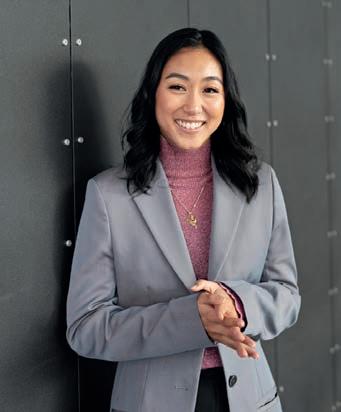
“The last in-person AWRE was in 2019, so we had no real sense of the expectations,” Sofie says. “But once we saw how ready everybody in the industry was, and how good the feedback was, it was all very encouraging.”
As the crowds filed through the ICC’s doors on 24 August, it became clear that the industry was primed to re-engage, network, and explore the latest developments in the pursuit of waste reduction and a circular economy.
A NEW SUMMIT
One of the centrepieces of 2022’s revamped AWRE was the new Resource Recovery Summit – co-hosted by the National Waste and Recycling Industry Council (NWRIC) and the Waste Contractors and Recyclers Association of NSW (WCRA). The Summit gathered industry experts and decision makers to discuss approaches to meeting the
National Waste Policy Action Plan’s target of 80 per cent average resource recovery rate by 2030.
New South Wales Environment Protection Authority (EPA) Chief Executive Officer Tony Chappel delivered the Summit’s opening address, setting an optimistic tone for the event.
Sofie says although just three weeks into the role, Tony’s enthusiasm for collaboration and change was clear. He acknowledged that while recent policy developments such as single-use plastic bans are positive, they are “just the tip of the iceberg” in terms of what’s required for Australia to reach the 80 per cent target.
She says Tony’s address was well received by many industry veterans, buoyed by his commitment to transparency, collaboration, and honesty between government and industry.
“I think they were encouraged to hear that the EPA would be open, engaged and supportive under Tony’s guidance,” Sofie says.
The Summit’s three streams –municipal solid waste, commercial and industrial, and construction and demolition – all generated valuable insight and discussion, as a who’s who of Australian waste experts took the stage.
Panels featured a range of speakers from the waste management and
resource recovery sector, the construction industry, and consultancy, with local government also well represented. Sofie says the panels broached some challenging topics with respect and enthusiasm, keeping the sold-out audience engaged throughout the sessions.
“The feedback was really positive,” she says. “It was intimate enough that it gave the audience the opportunity to speak directly with the experts, as well as business leaders from major waste management companies such as Veolia, Bingo Industries, and Remondis. We saw a lot of fantastic discussion going on between sessions, and that carried over onto the show floor afterwards too.
72 / WMR / October 2022 EVENTS
Sofie Teh, Product Manager, AWRE.
“We were overall very pleased with the response, and we’re already working on ways to build on that for 2023 and beyond.”
A POSITIVE ENERGY
The good vibes from the successful Summit carried over to the bustling show floor, and a regularly packed-out Seminar Program.
“The attendance was amazing for all sessions,” Sofie says. “Every time I popped into one of the theatres, there were people standing up at the back because the seats were all taken and
standing room was completely full.”
As well as a varied roster of exhibitors, the show floor featured specialised zones, both new and returning.
The Australian Organics Recycling Association (AORA) brought back its Organics Zone, offering a dedicated exhibition space for member organisations. This offered a place for organics-focused delegates to gather and make connections.



The newly introduced Innovation Zone provided a space dedicated to fresh ideas and technology for the sector –from smart bin technology to modular compost solutions – something Sofie says resonated with the crowds.
“These newer start-ups all brought a really good energy, and this community is very engaged and excited about their solutions. It provided a good balance with the other established brands on the show floor. These innovators are keen to see their ideas get out there, and they know it’s going to make a difference.”
The Innovations Pitch Fest on day two gave these Innovation Zone exhibitors an opportunity to present their solutions for discussion at one of the seminar theatres.
“They could do a short pitch or presentation and field questions from the audience,” Sofie says. “That’s something we’d like to develop further next year, because it’s a great platform for this driven community of innovators to get industry feedback, and connect with people who can help progress their solutions.”
AWRE, BUT WITH LESS W
One area of focus for AWRE 2022 was a reduction of the waste generated by the exhibition itself. Large events and responsible waste management have historically found themselves at odds, which is why AWRE brought back its “Strive for Five” campaign – which set a target of just five per cent of the event’s waste sent to landfill.
Balancing the smooth operation of an exhibition while trying to practice what it preaches is a multi-faceted challenge, but Sofie says there’s no better event to implement such measures than AWRE.
“Working with the ICC Sydney –they’re very conscious about everything they put out on the exhibition floor,” Sofie says. “Catering used either biodegradable material or reusable
www.wastemanagementreview.com.au / WMR / 73
The Innovation Zone provided a dedicated space for new ideas.
Tony Chappel, New South Wales EPA CEO.
crockery, and we encouraged people to bring reusable coffee cups and use their own water bottles at our refill stations.”
AWRE provided contactless water refill stations around the exhibition floor, which supplied 282 litres of water during the two days – the equivalent of 470 600-millilitre plastic bottles.
Exhibitors were encouraged to only provide collateral that was reusable, and to avoid single-use items. Dedicated

solutions were provided for each of the different waste streams, and even name badges were collected for reuse or recycling at the conclusion of the show.
“As for our signage and operational set-up, we use panels and frames that are reusable, or at the very least recyclable,” Sofie says.
“In the past, big events like this have been quite wasteful. There’s always more work to be done, but we’re making big
steps in the right direction – and we’re never going to be short on feedback at an expo like AWRE.”
Sofie says each year the team will be able to build on feedback from exhibitors and delegates, and will keep exploring ways to make the exhibition more sustainable.
“We’re already very excited for next year,” Sofie says.
“We look forward to providing more opportunities to facilitate important conversations, help people make better connections in the industry, and be a place where these can turn into meaningful actions and solutions for the waste and recycling industry.”

AWRE will return to the ICC Sydney on 26-27 July 2023.
For more information, visit: www.awre.com.au
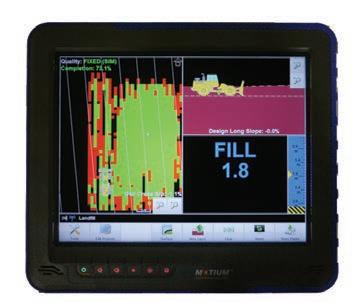
EVENTS Optimise compaction and increase productivity with Carlson machine guidance. Backed by industry expertise & nationwide support at Position Partners. 1300 867 266 • positionpartners.com.au WANT TO MANAGE YOUR SITE MORE EFFECTIVELY? Exhibitors were encouraged to avoid single-use items.
IIOT PLATFORM MONEO

Is the vibration behaviour of your motor within the normal range? Are the valves okay?
Just a few clicks and moneo will answer these questions.
The software platform uses and focuses on the power of digital information generated by smart IO-Link sensors and makes it available to you as a solid basis for decisionmaking while indicating the need for action to warn you before it is too late.
Planning maintenance according to requirements is important to ensure future machine uptime is efficient, and real-time maintenance is convenient.
Moneo’s modular concept provides a selection of different, easy-to-handle applications that can be linked together. From sensor parameter setting to condition monitoring, moneo offers all the features of a future-proof IIoT software.
For more than 50 years, ifm has been supporting customers as a supplier of automation solutions. It has now combined its experience in sensor technology with
the knowledge of software subsidiaries – this is moneo, “simply made for you”.
TELFORD SMITH, GREEN CREATIVE FLEXIDRY BIOWASTE DEPACKAGING SOLUTION
The FLEXIDRY depackaging solution separates packaged biowaste from containers, and with a technology that doesn’t require water nor shredding, regardless of the type of packaging or organic matter.
By ‘unpacking’ food waste, FLEXIDRY saves precious biowaste from incineration and turns it into pure organic matter.
FLEXIDRY technology is based on a unique combination of perforation, compression, filtering and brushing methods guaranteeing an exceptional purity rate that can’t be achieved with traditional shredding methods.
FLEXIDRY is the only industrial solution that guarantees a packaging free pulp purity of 99.5 per cent. This results in a higher methanogenic potential for biogas production and a safe/healthy soil fertilisation through quality compost or digestate.
FLEXIDRY can treat up to 10 tons of packaged biowaste per hour, or about 25m3 per hour, while guaranteeing a pulp quality that remains unmatched.
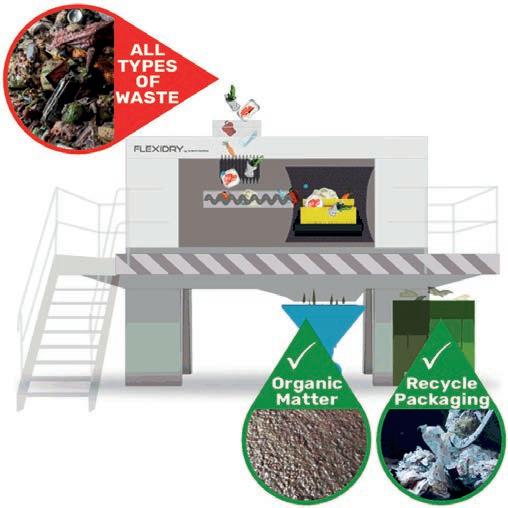
GREEN CREATIVE is a French industrial company, which designs and manufactures the next generation
biowaste depackaging equipment and is represented throughout Australasia by TELFORD SMITH.
The FLEXIDRY depackaging solution.
Contact - Telford Smith P 03 8792 9777 W www.telfordsmith.com.au
IFM EFECTOR,
Contact – IFM Efector P +61 1300 365 088 E sales.au@ifm.com W www.ifm.com/au
Moneo software platform
www.wastemanagementreview.com.au / WMR / 75 PRODUCT SPOTLIGHT
PLASTIC PRODUCTS







WASTE

Visit the Biogone product range to help meet the 2025 National Packaging Targets EVERYDAY
BIN LINERS DOG
BAGS PACKING & SHIPPING GLOVES
Bin there, done that
ROBERT KELMAN, DIRECTOR RELOOP PACIFIC, SAYS A CHANGE IS NEEDED FOR AUSTRALIA’S CONTAINER DEPOSIT SCHEMES TO REACH GLOBAL BEST PRACTICE.

Australia will, with the advent of the Tasmanian and Victorian Container Deposit Schemes (CDS) next year, be the first continent globally with full CDS coverage.
Unfortunately, with current design, billions of drink containers are still being littered or landfilled in Australia every year and our circular economy outcomes are, as a result,
poor. Australia’s collection rates are somewhere between 60 and 76 per cent, while European schemes generally recycle 90 per cent or more.
In general terms the 10-cent refund is increasingly meaningless to most Australian consumers and all states need more accessible return points.
South Australia’s long-awaited CDS reform is progressing, though it appears at this stage could be a missed opportunity.
South Australia should be setting an agenda for the rest of the country to get to 90 per cent or more in return rates. Why wouldn’t they? But real modernisation is required – i.e. the government could protect the depot operators and haul in an additional 20 per cent of containers with some additional convenient consumer return options but they appear reluctant to do so. An overdue ‘consumer motivations’ study won’t now arrive
until after legislation is drafted, so its impact on design decisions would appear limited; and it appears any new target will be set based on what ‘can be achieved’ rather than as a direction for where the government wants the scheme to go.
Circular economy outcomes of bottle-to-bottle recycling are dependent on the success of the CDS collection networks. This stream of materials provides for much higher quality and consistency of product than that recovered through Material Recovery Facilities (MRFs).

The most recent public data from the ACT outlines an even split of 34 per cent for both CDS and MRF returns, leading to a total 68 per cent collection rate.
All schemes must prioritise shifting as much material as possible out of the kerbside stream and into the CDS network. This limits contamination
www.wastemanagementreview.com.au / WMR / 77 LAST WORD
There’s an opportunity to bring Australia’s CDSs in line with global best practice collection rates.
Robert Kelman, Director Reloop Pacific.
and ensures consumers aren’t being short-changed on their refunds.
Accurate and transparent data reporting is also important. It’s vital the community is provided with accurate and transparent reporting.
Victoria and Tasmania, as the newest schemes coming online, should ensure timely, accurate and transparent reporting protocols so we avoid having to dig around for accurate information.
The Queensland Minister is now looking for a new independent Chair for Container Exchange (COEX) and there’s a post for a new Chief Executive Officer.
The Minister also recently announced: “The department at the end of the year will conduct a review to see how we can stop even more containers from ending in landfill.” This is welcome and gives an opportunity for scheme participants to
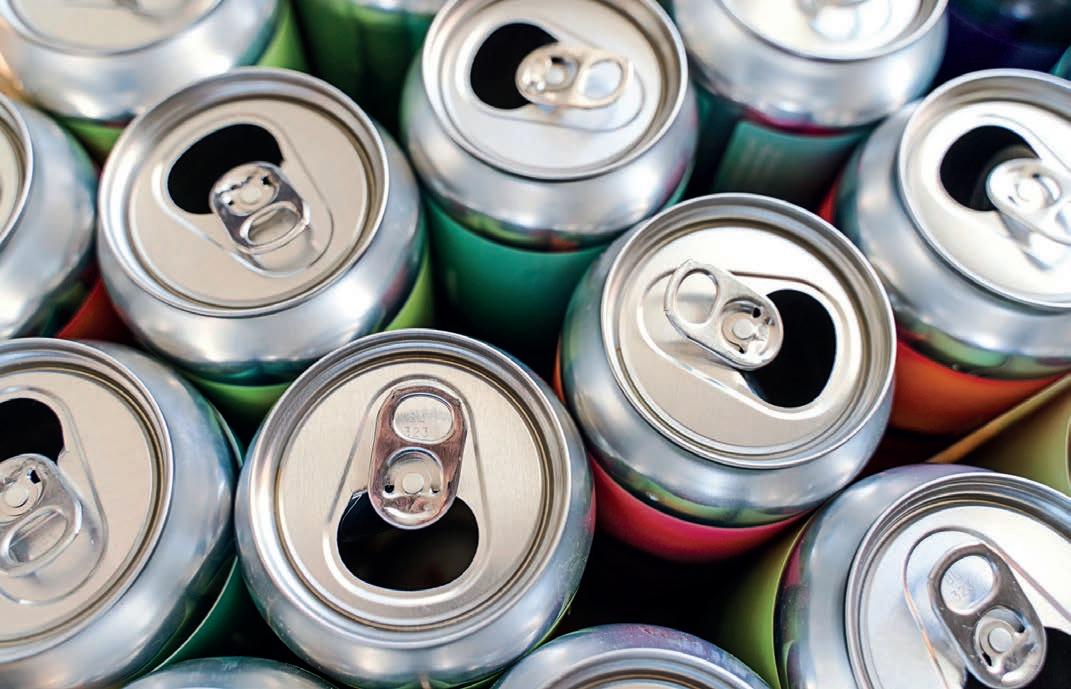
reset in the aim to achieve the 85 per cent target.
Though, even the New South Wales scheme, generally accepted to offer relatively high levels of consumer convenience, is proving difficult to shift recovery rates toward 80 per cent (albeit this scheme experienced COVID shutdowns in late 2021).
The lack of a mandate on retailers to take-back containers and Australia’s low refund value stymies our beverage container recycling outcomes.
It would make sense to immediately set Australian states refunds at 30 cents to future proof and avoid having to reprosecute the issue. Most of Europe is already above A30cent equivalent and New Zealand is proposing to start its CDS at NZD20cents. New Zealand is also going for global best practice with a hybrid collection network mandating retailers (over a certain size) to take back containers as well as zero-waste-
style depots and thinking about how to embed refillable bottles in its economy.
Australian CDS’s will, I believe, continue to struggle getting to the container return rates required or the truly circular economy outcomes expected by Australian consumers.
As we seek to modernise or improve CDS’ across Australia, we need scheme co-ordinators and collection point operators working more collaboratively; we must institute a meaningful refund value and purposefully aim for an achievable 90 per cent or more return rate.
Reloop works at the intersection of governments, industry stakeholders and NGOs who share a common vision of a thriving circular economy. Reloop’s policy positions and recommendations are based on datadriven research, best-in-class principles and real world case studies.
78 / WMR / October 2022 LAST WORD
Kelman believes Australia’s CDSs are being stymied by low refund values.

TOPTURN

STAR SCREENS WINDROW TURNERS
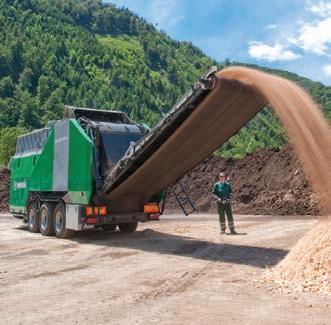





MULTI STAR
NEMUS
AXTOR

komptechcea.com.au 1300 788 757 DELIVERING A GREENER FUTURE Komptech CEA is a leading supplier of machinery and systems for the treatment of solid waste through mechanical and mechanical biological treatments, as well as the treatment of biomass as a renewable energy source. Komptech CEA is proud to provide innovative solutions for handling waste and biomass. Komptech CEA’s extensive range of products cover all key processing steps in modern waste handling. At Komptech CEA the focus is always on innovative technology and solutions ensuring maximum benefit to the customer. Like to know more? why not speak to one of our team today? TERMINATOR Where Function Meets Technology A slow-running, single-shaft shredder suited to all types of waste. CRAMBO Less Fuel, More Power Ideal for shredding all types of wood and green cuttings.
Screening with a Star Makes waste wood and biomass processing highly efficient.
X The Ideal Combination of Performance and Design With a sturdy frame, powerful hydraulics and large drum, the Topturn X is ready to handle any work situation.
Robust and Reliable Combining the practice-proven virtues of its predecessors with new solutions for even greater performance.
Shredding and Chipping Made Easy One of the most versatile machines around for processing wood and green cuttings. SHREDDERS TROMMEL SCREENS













































































































































































































